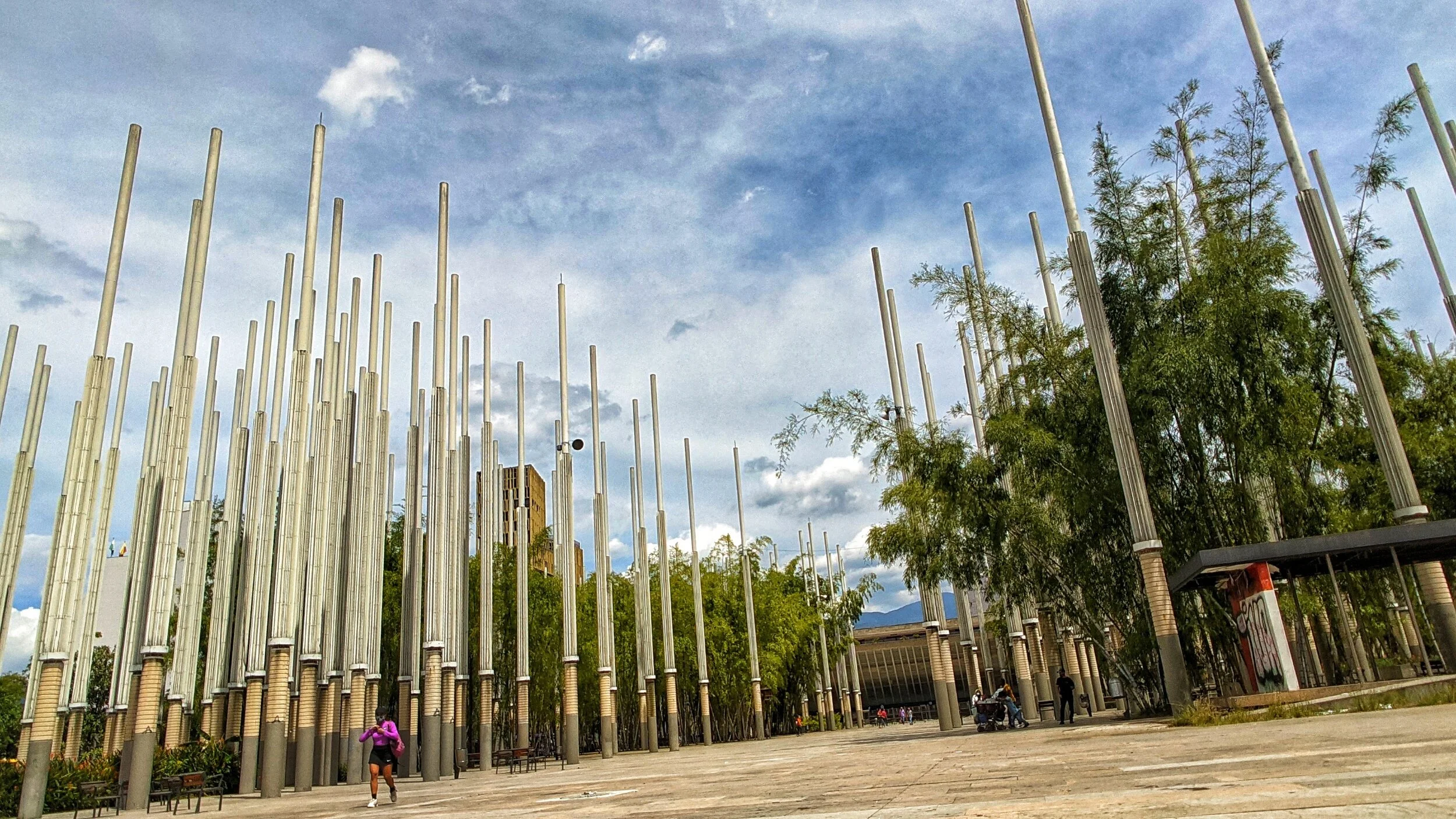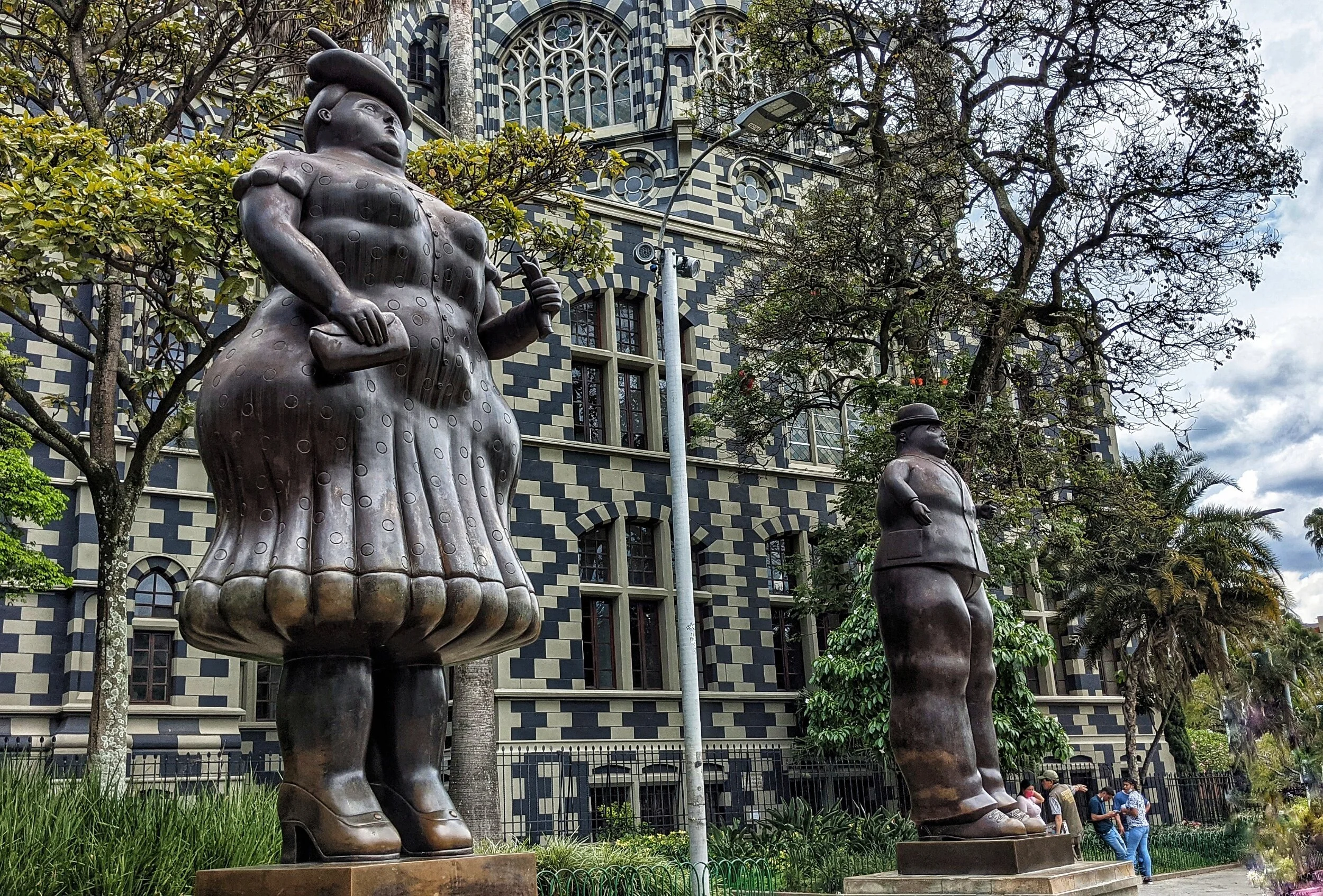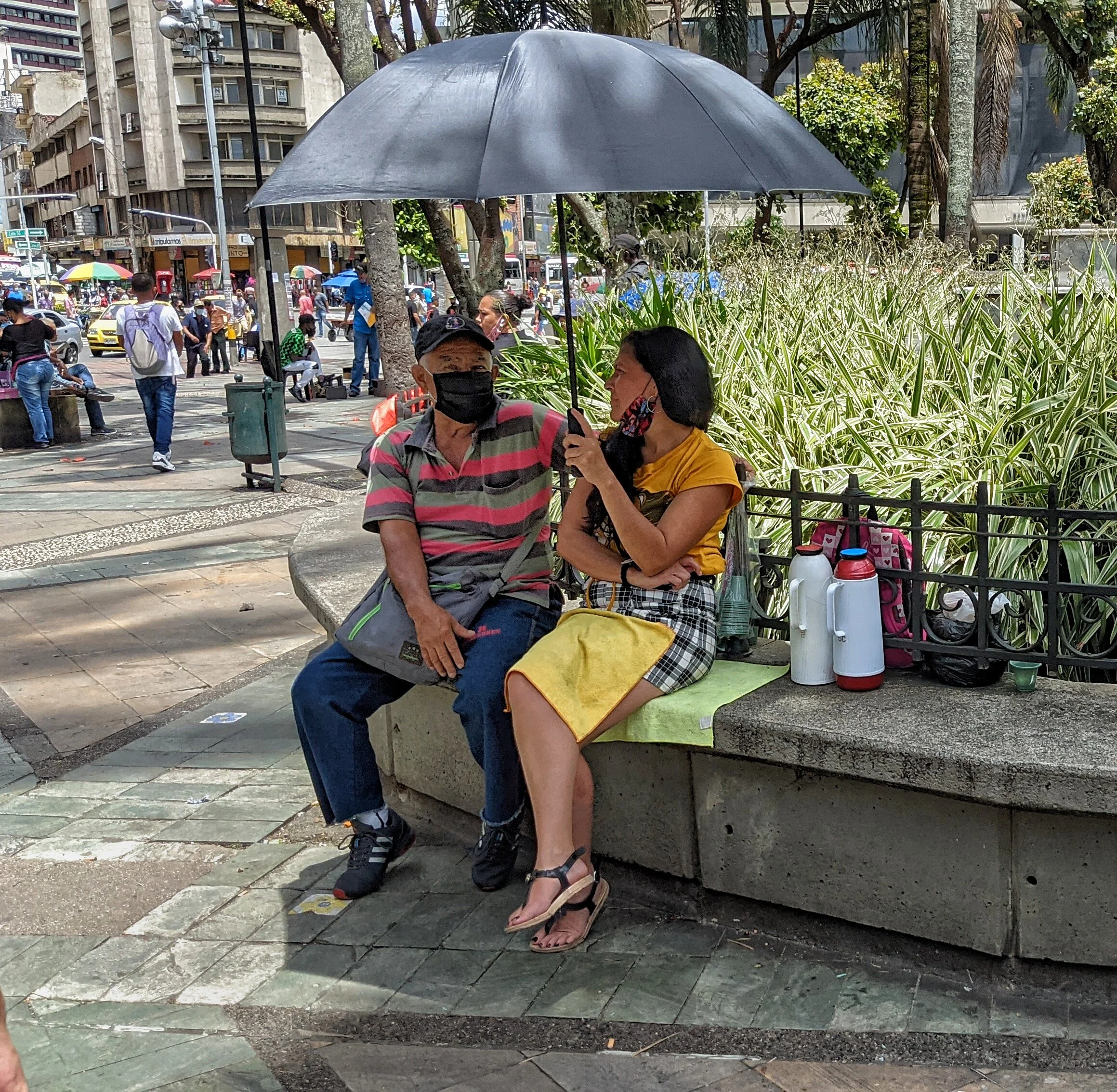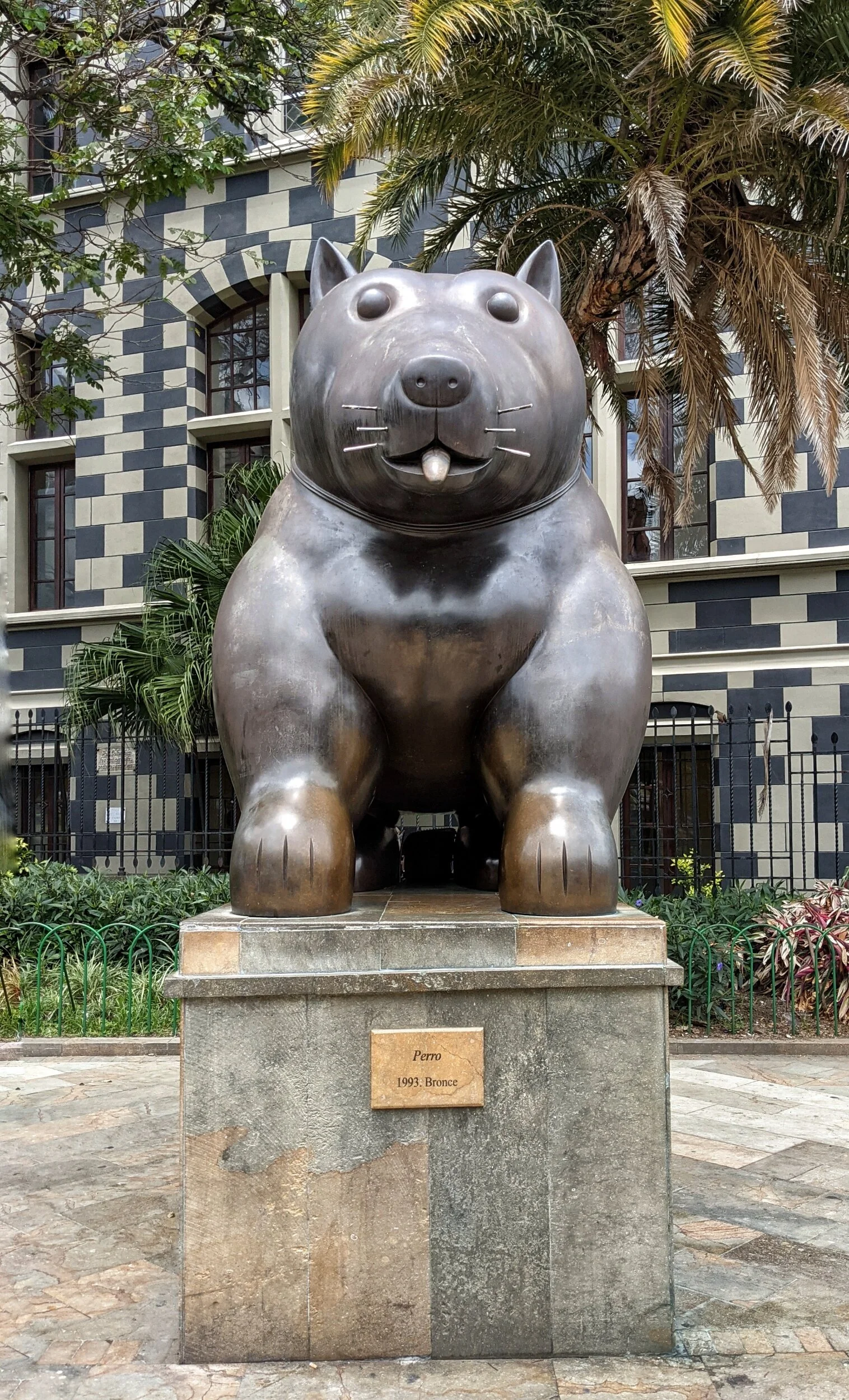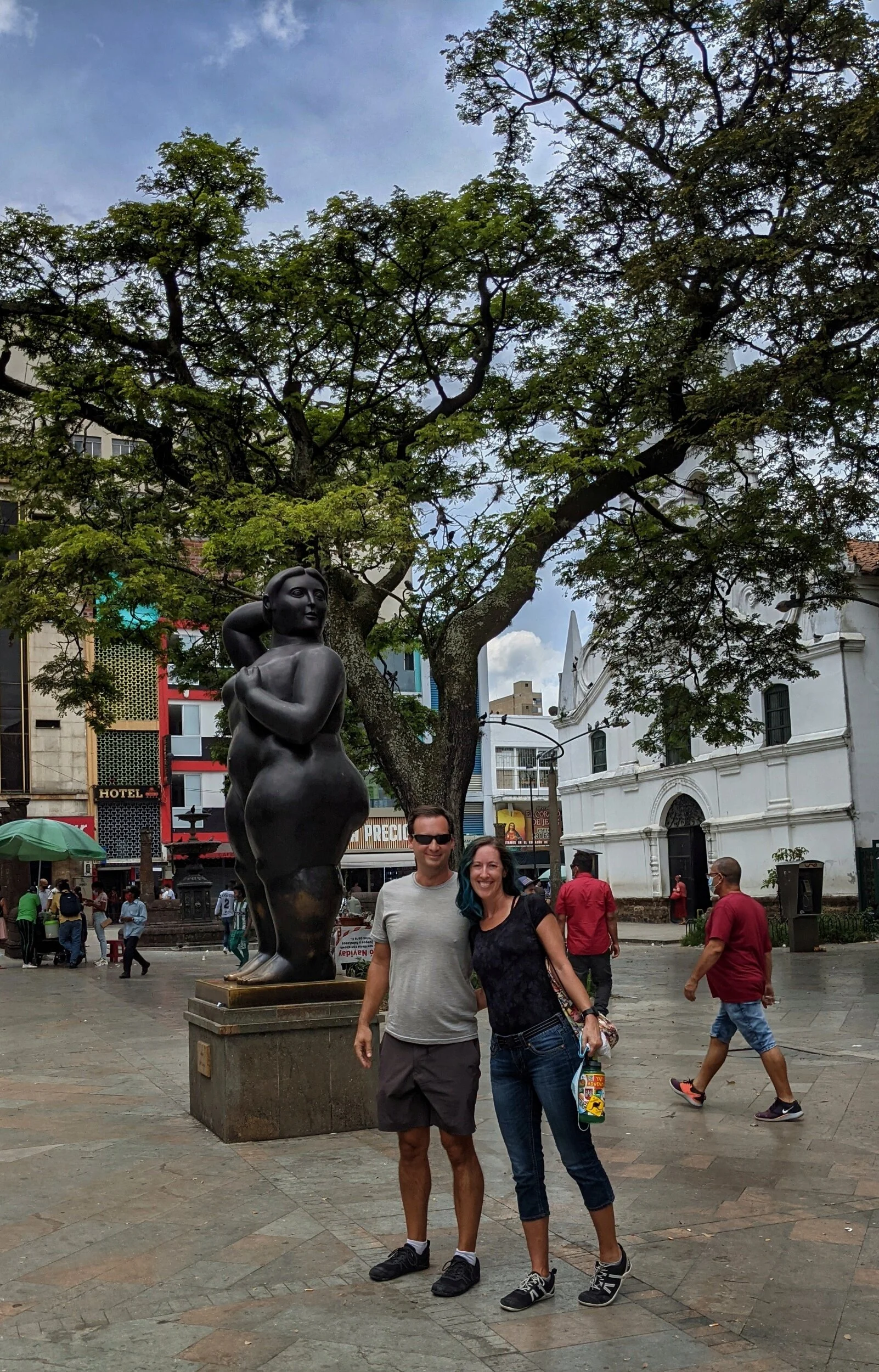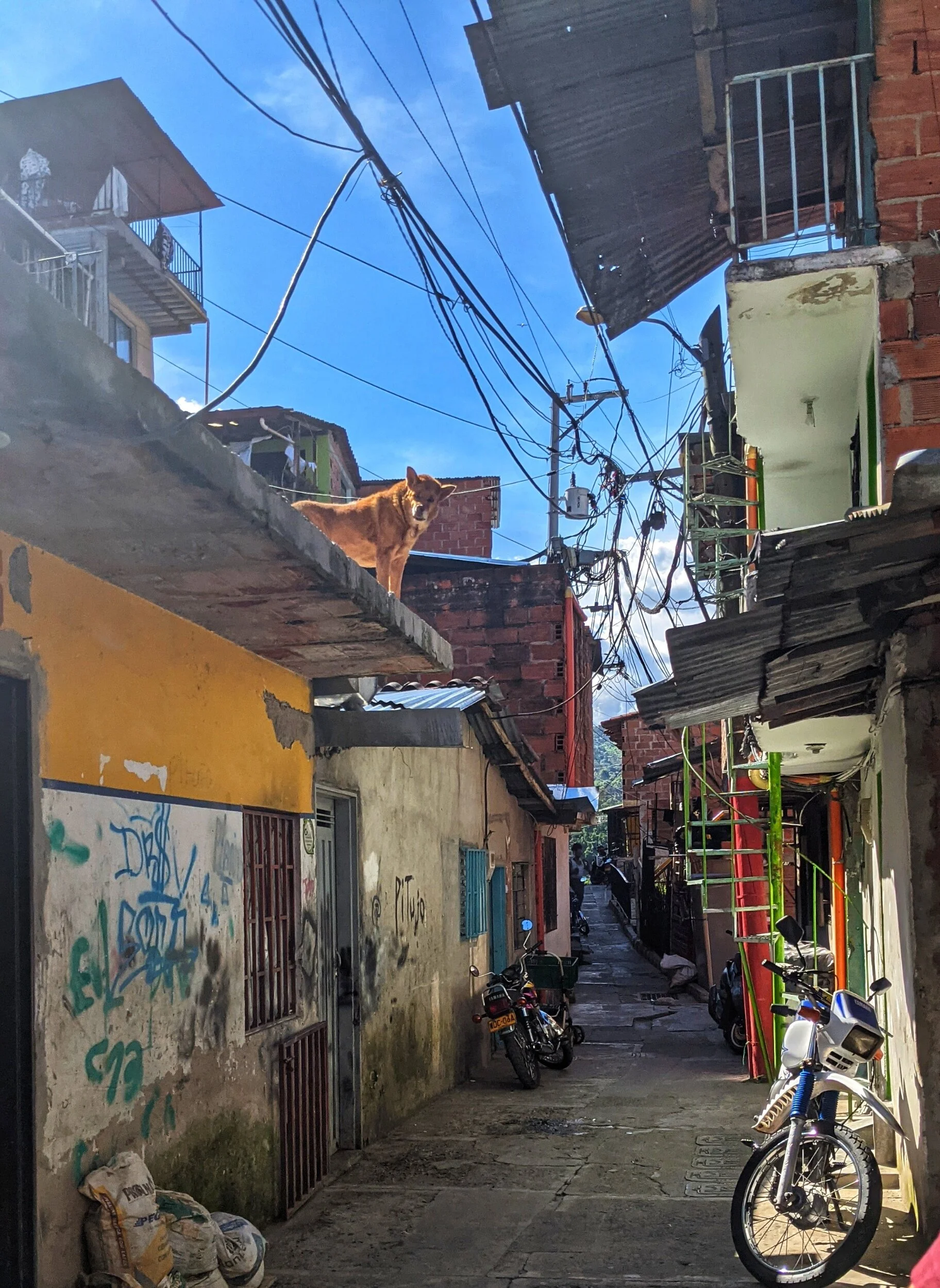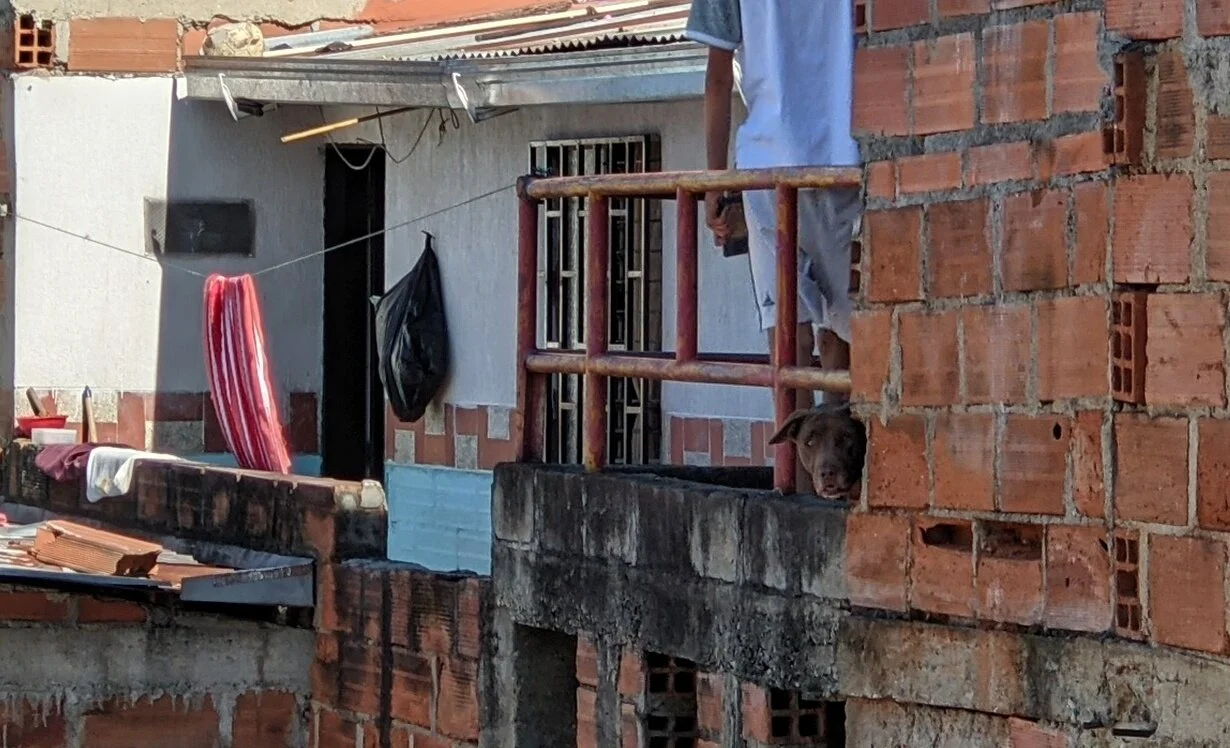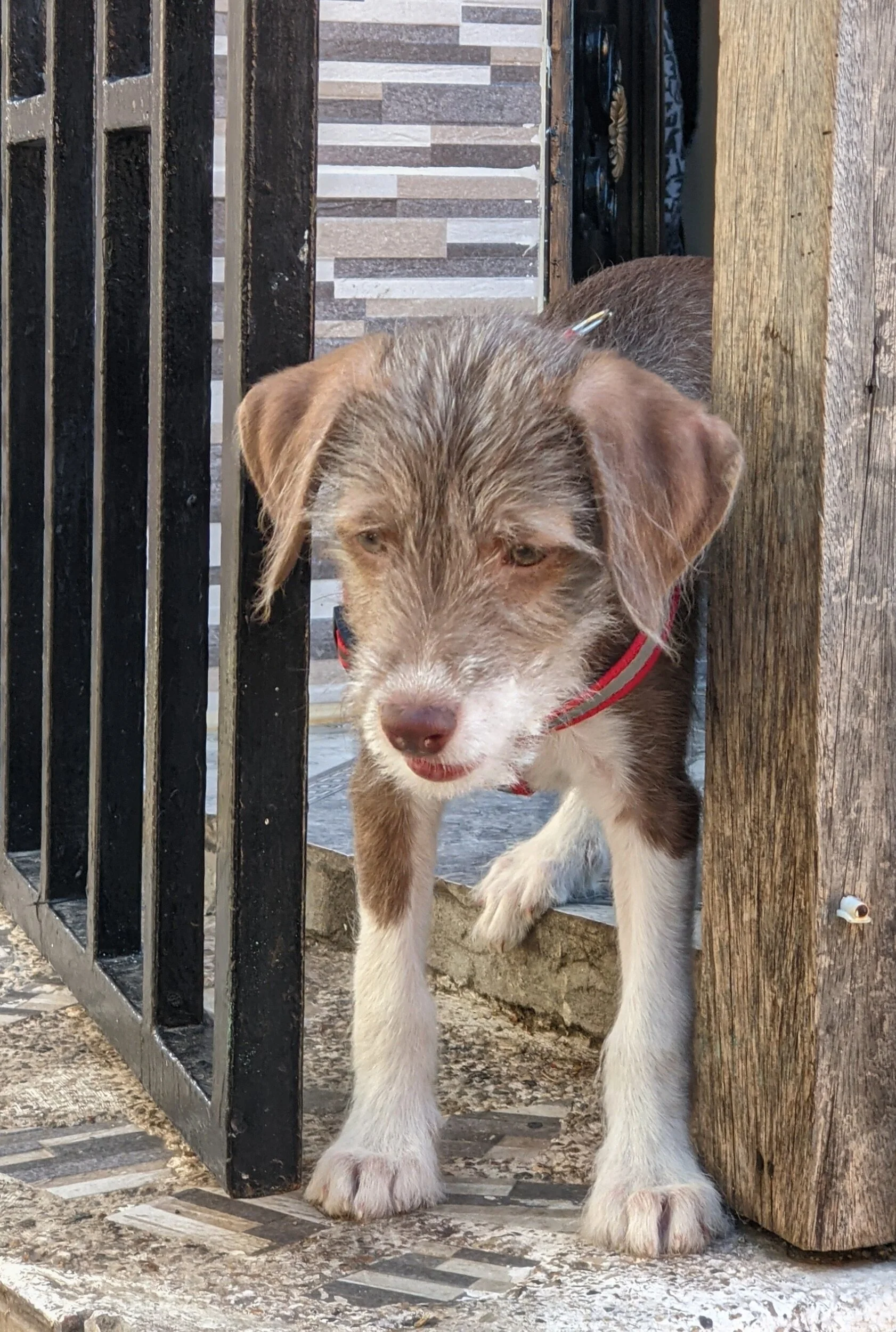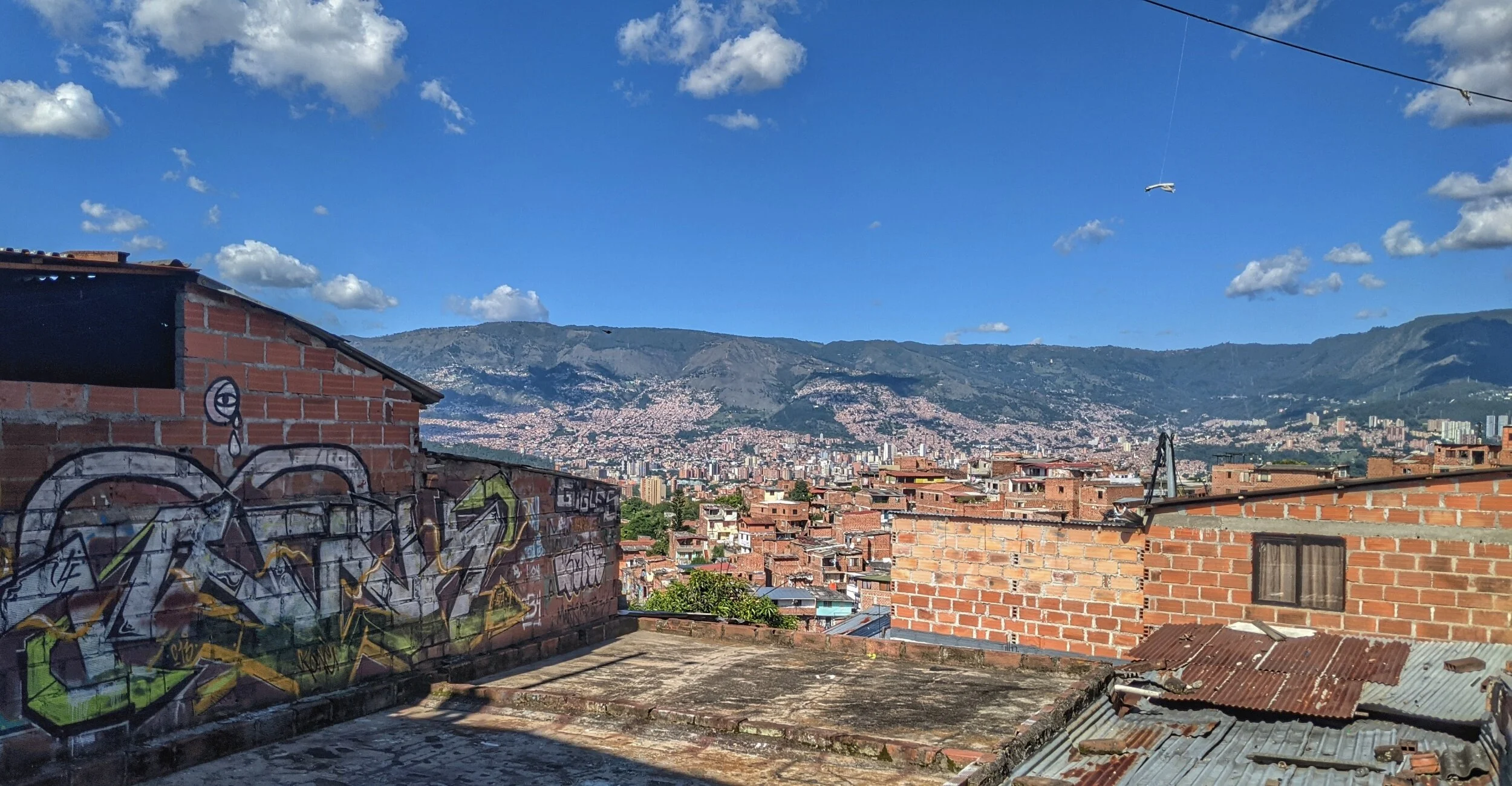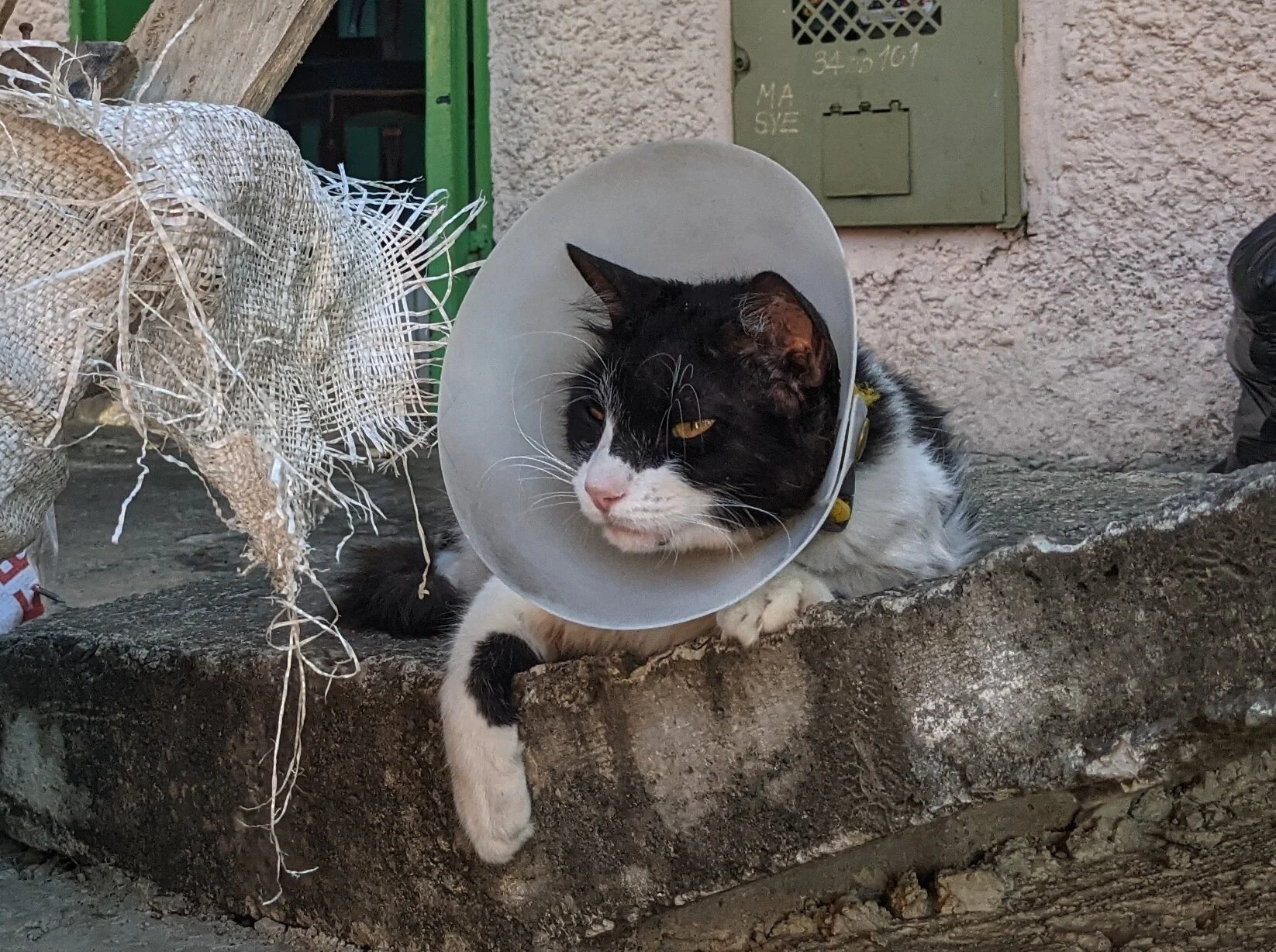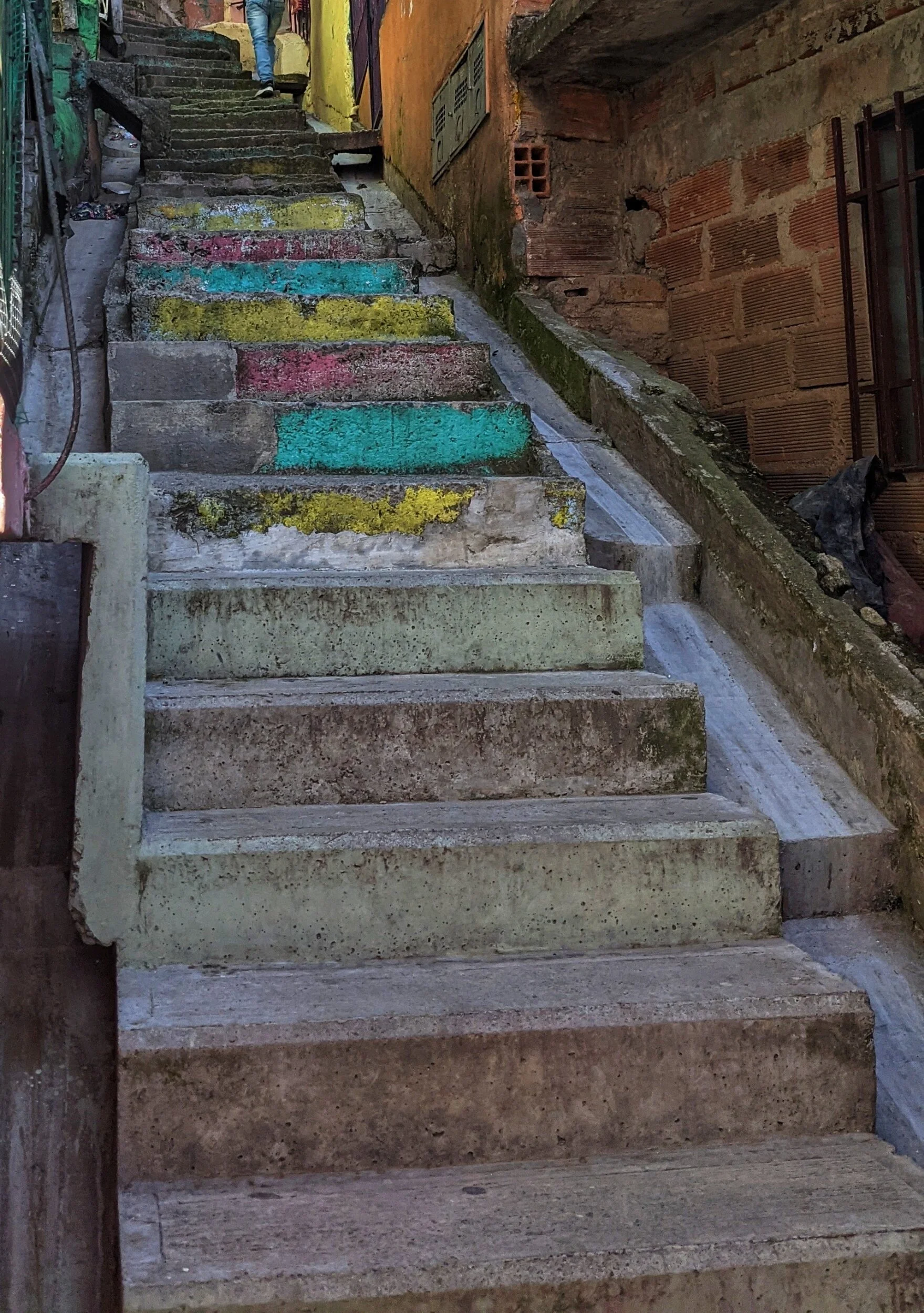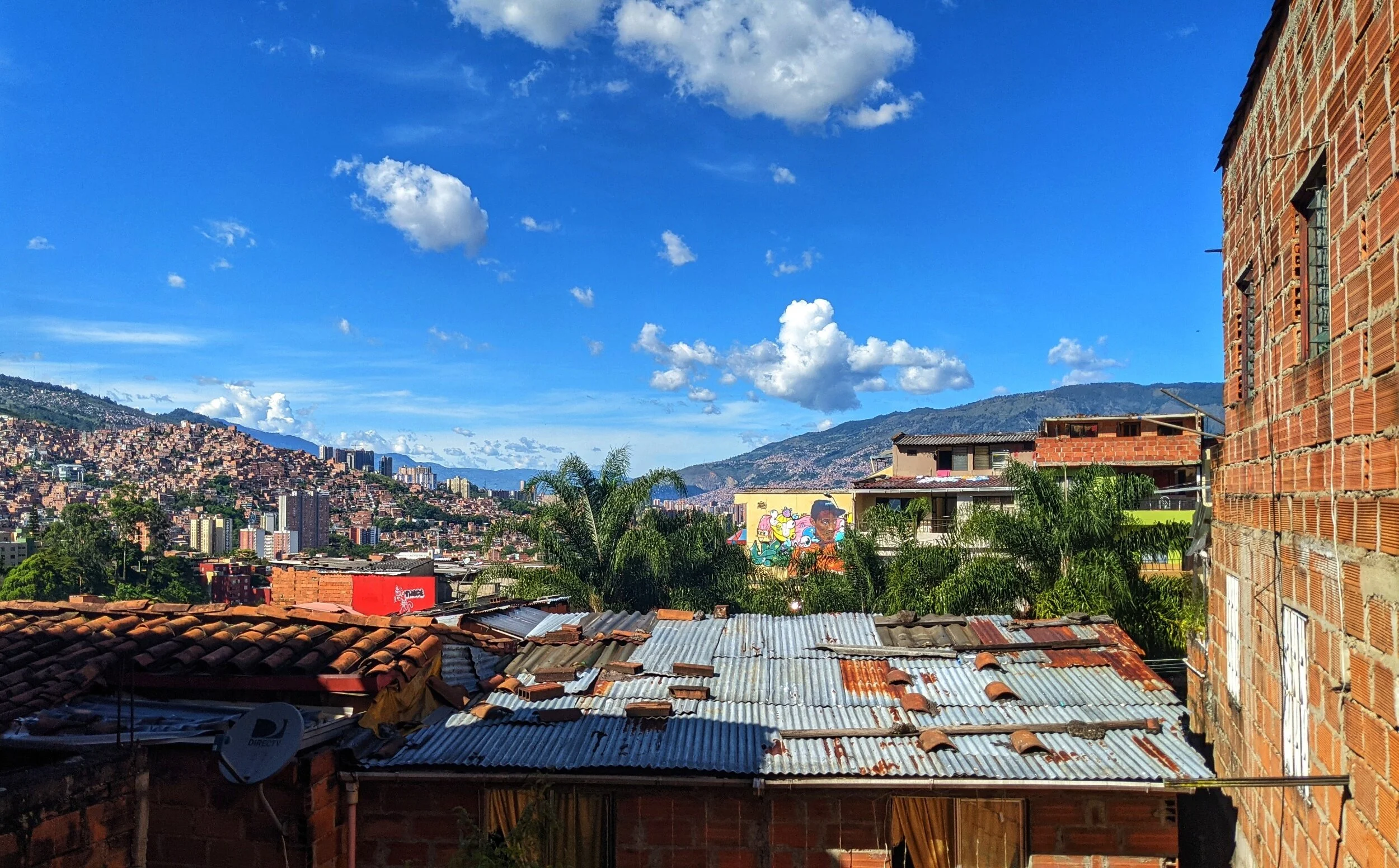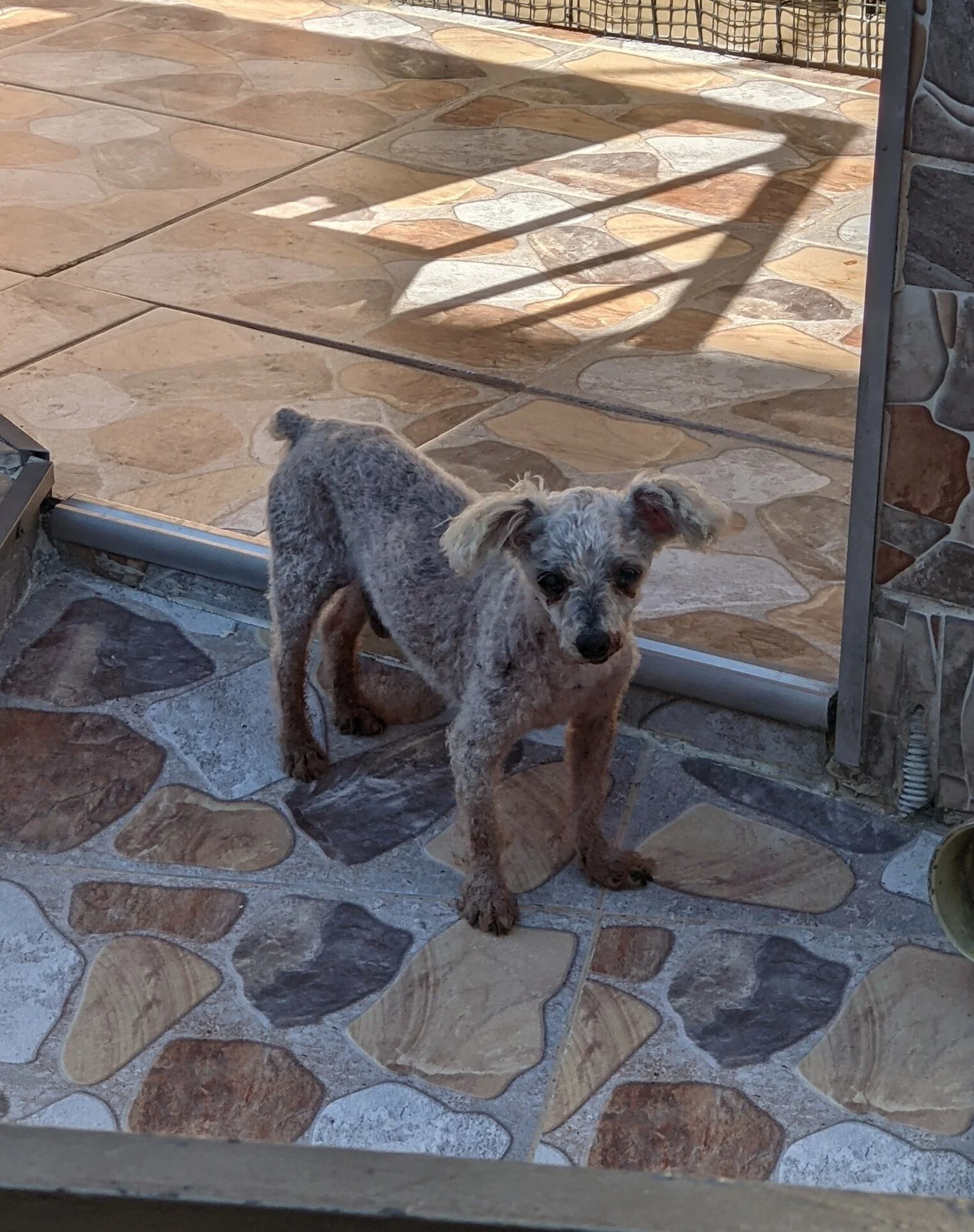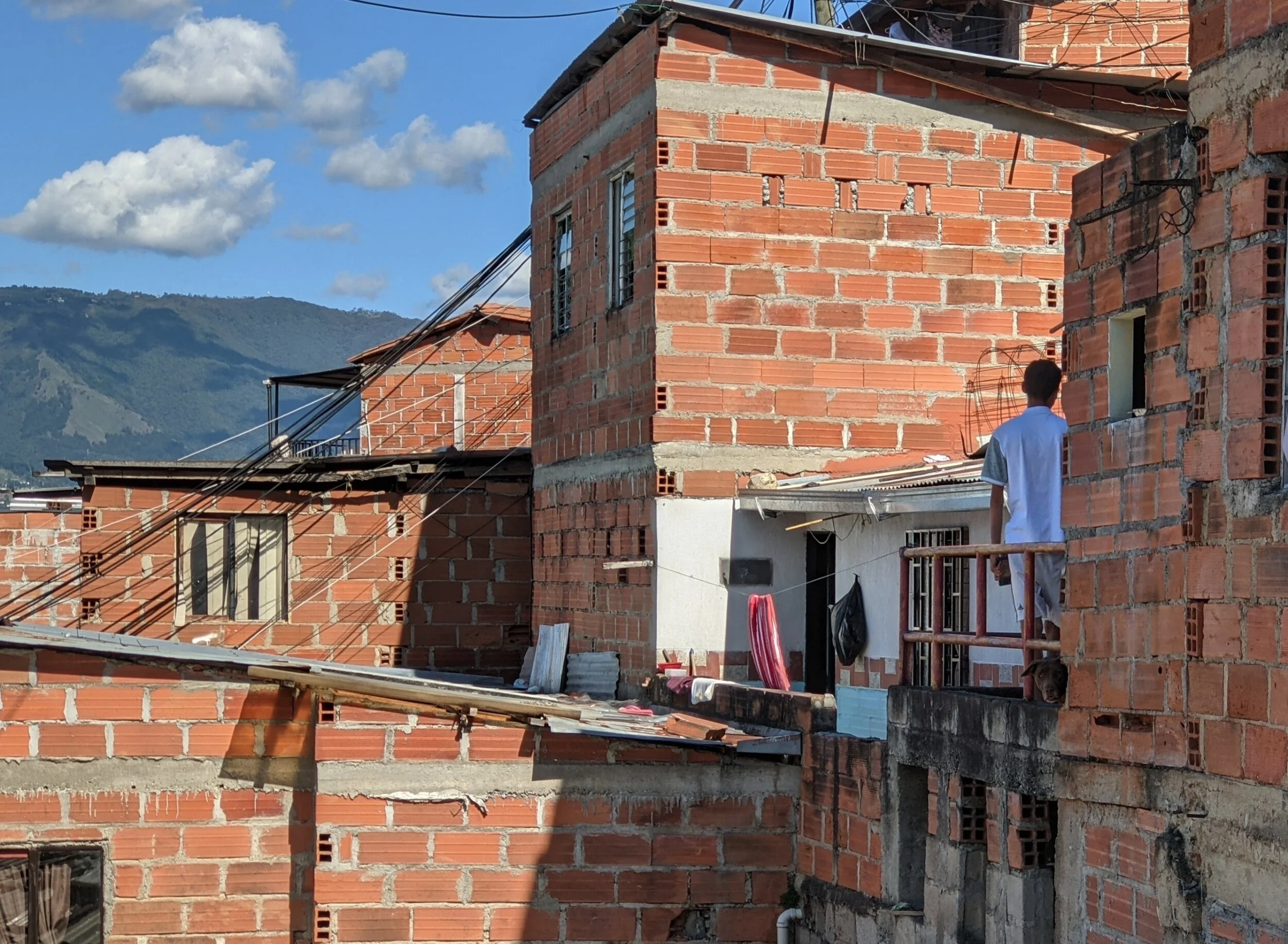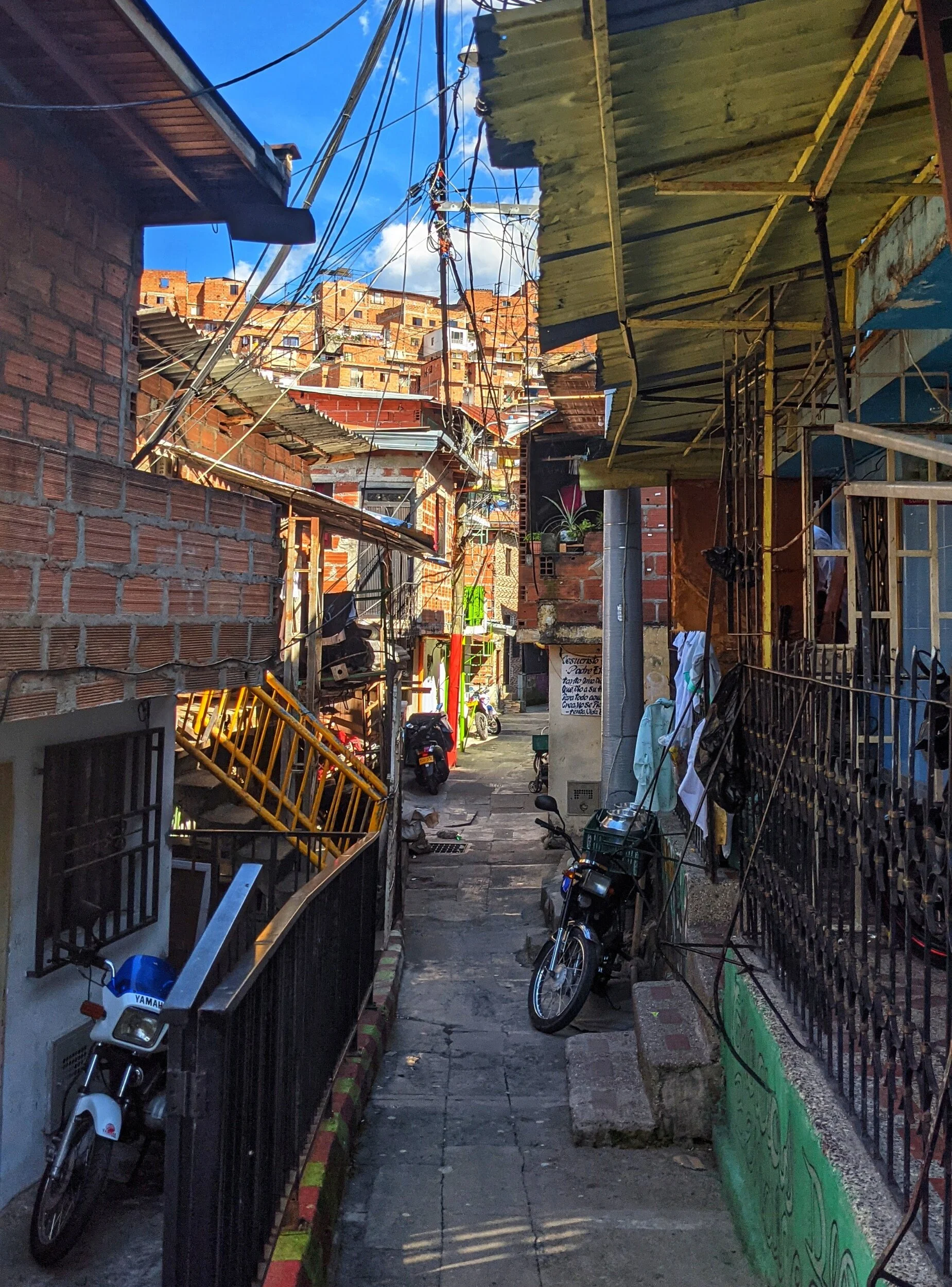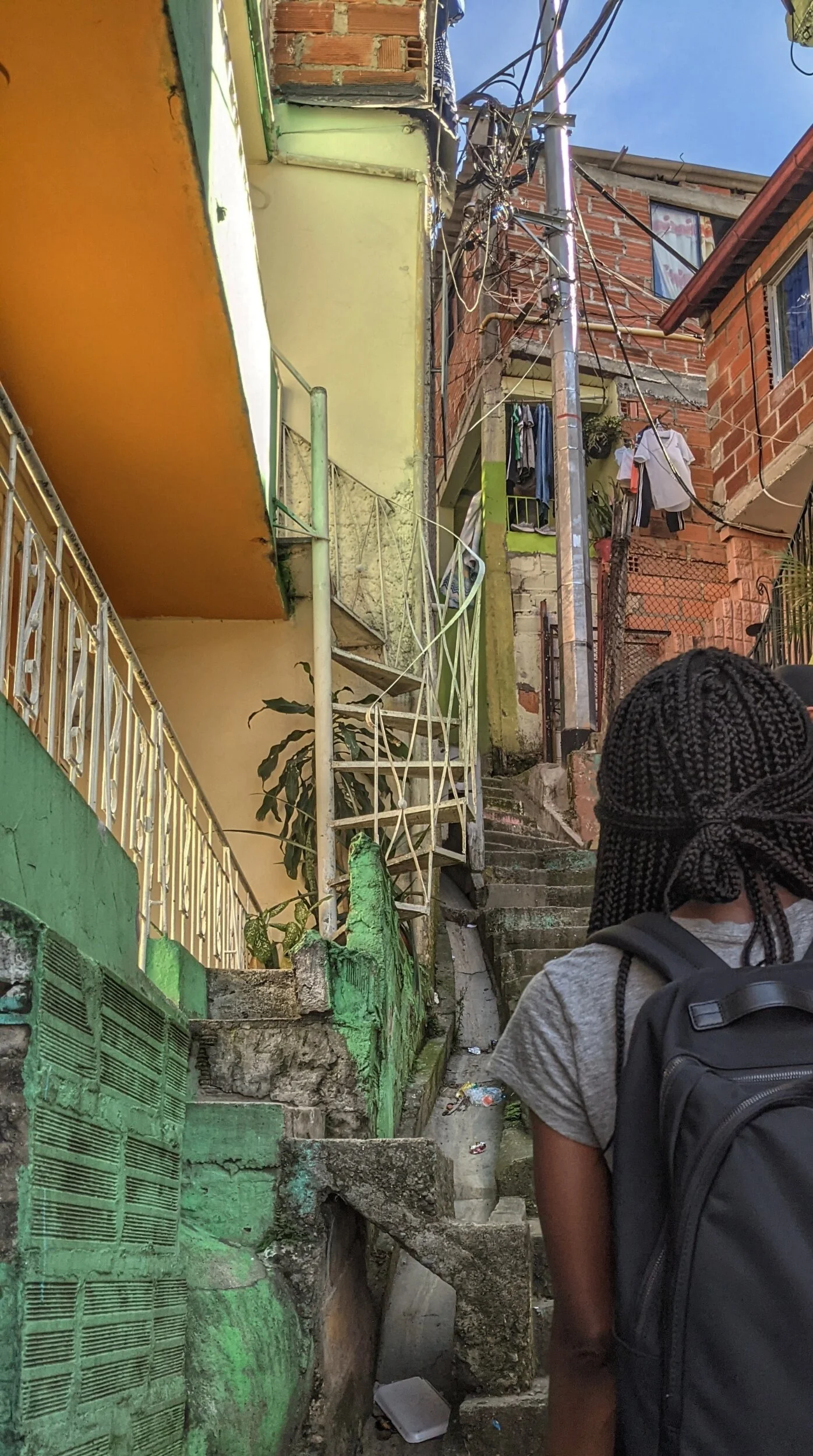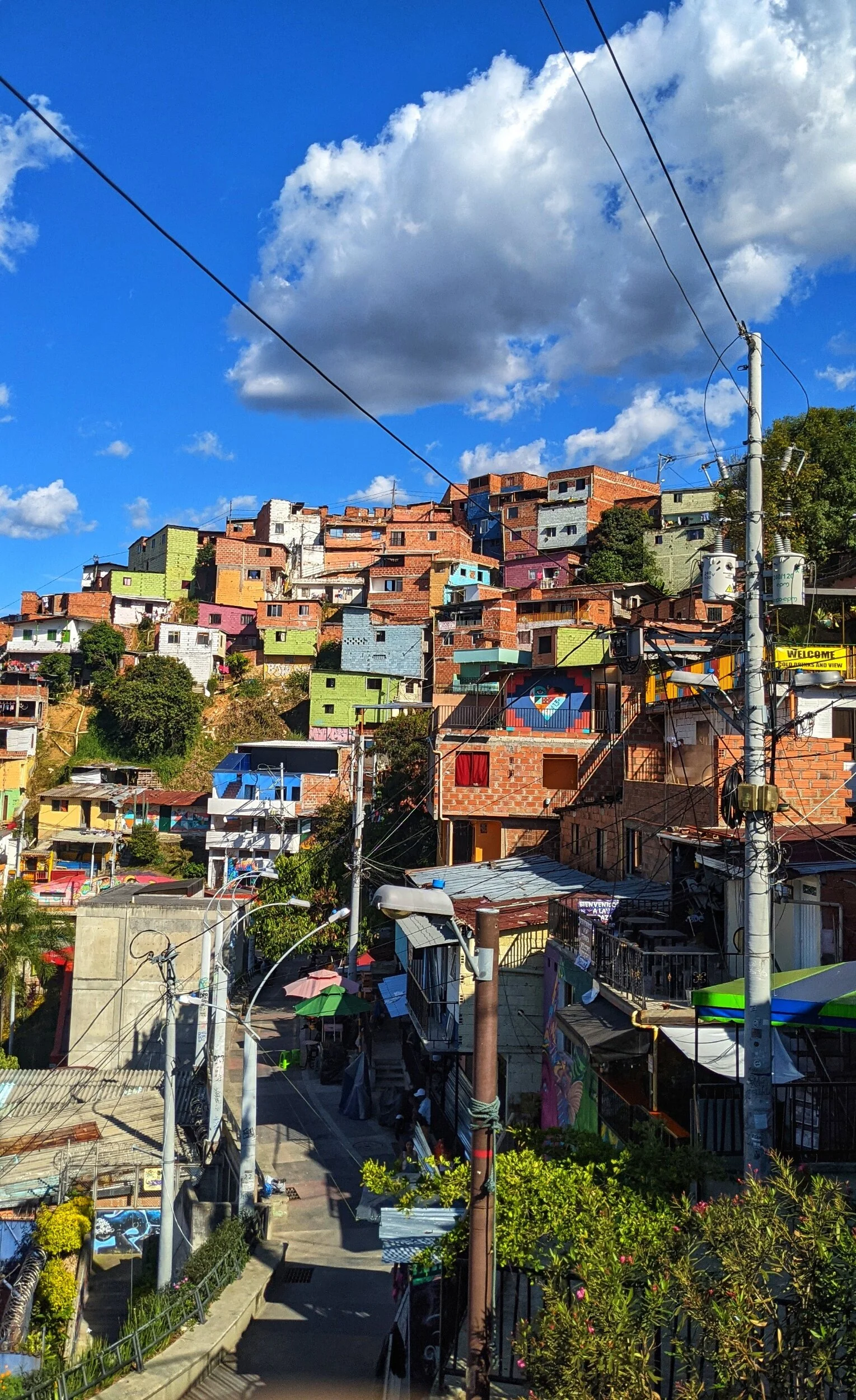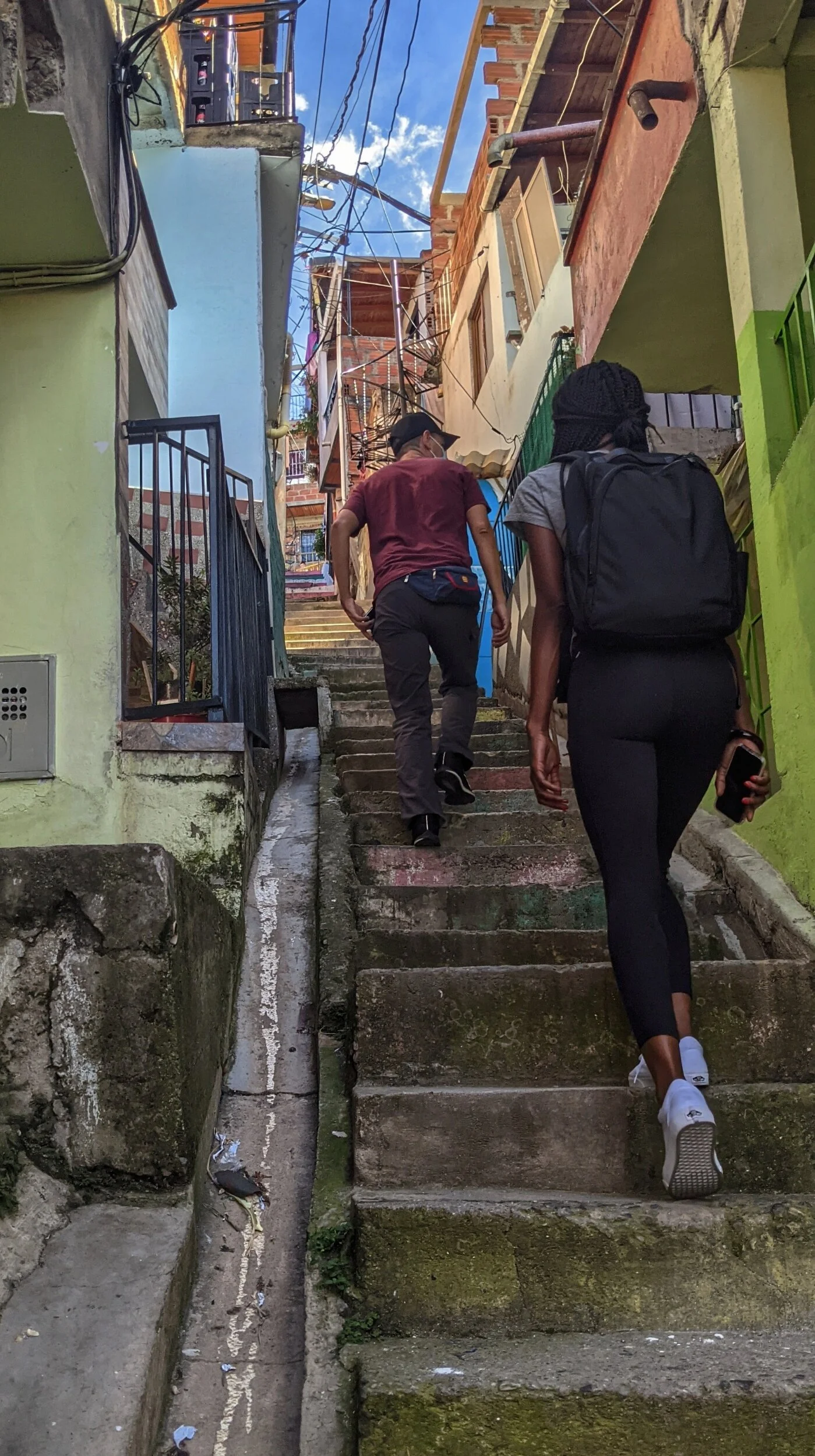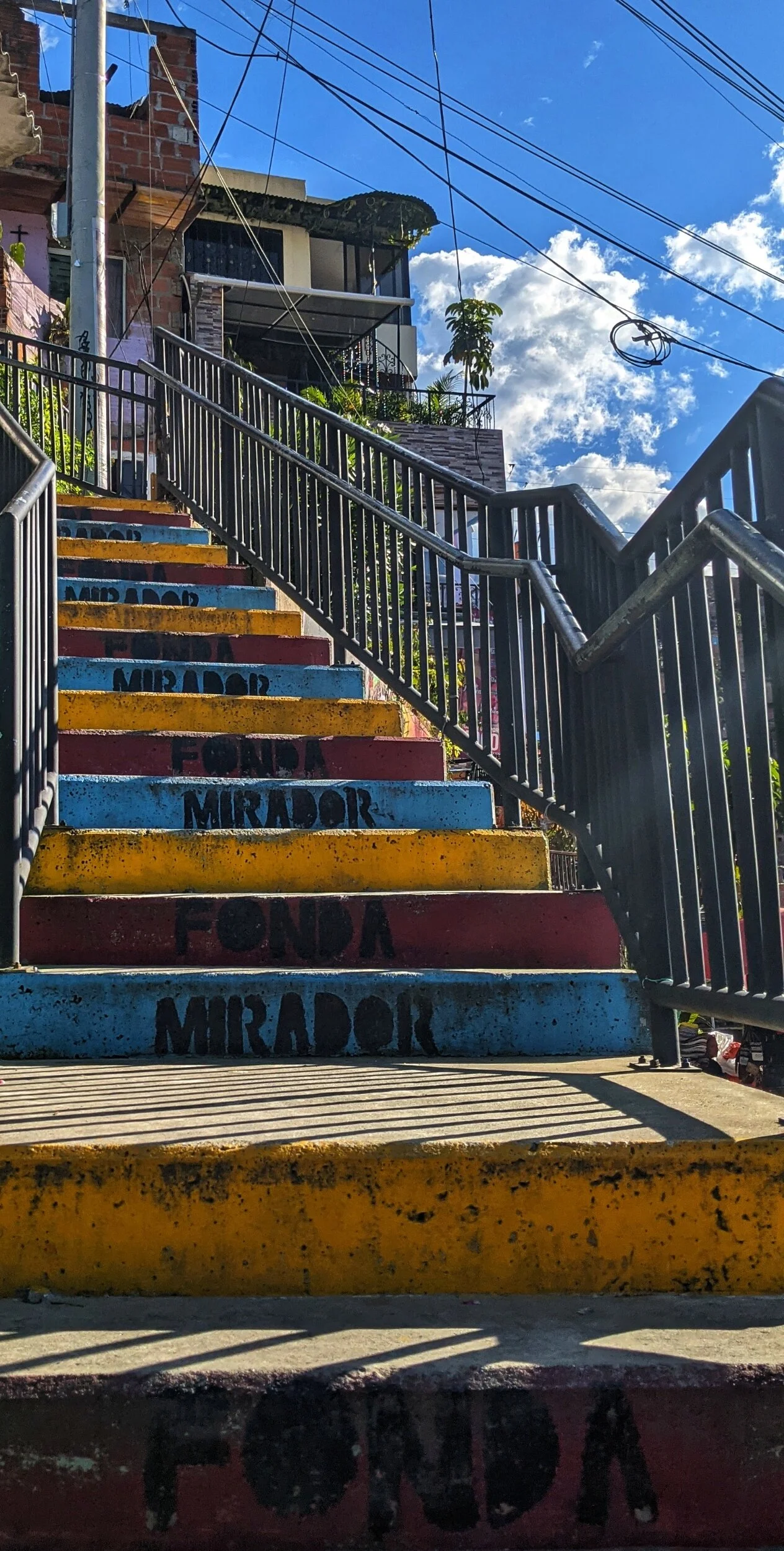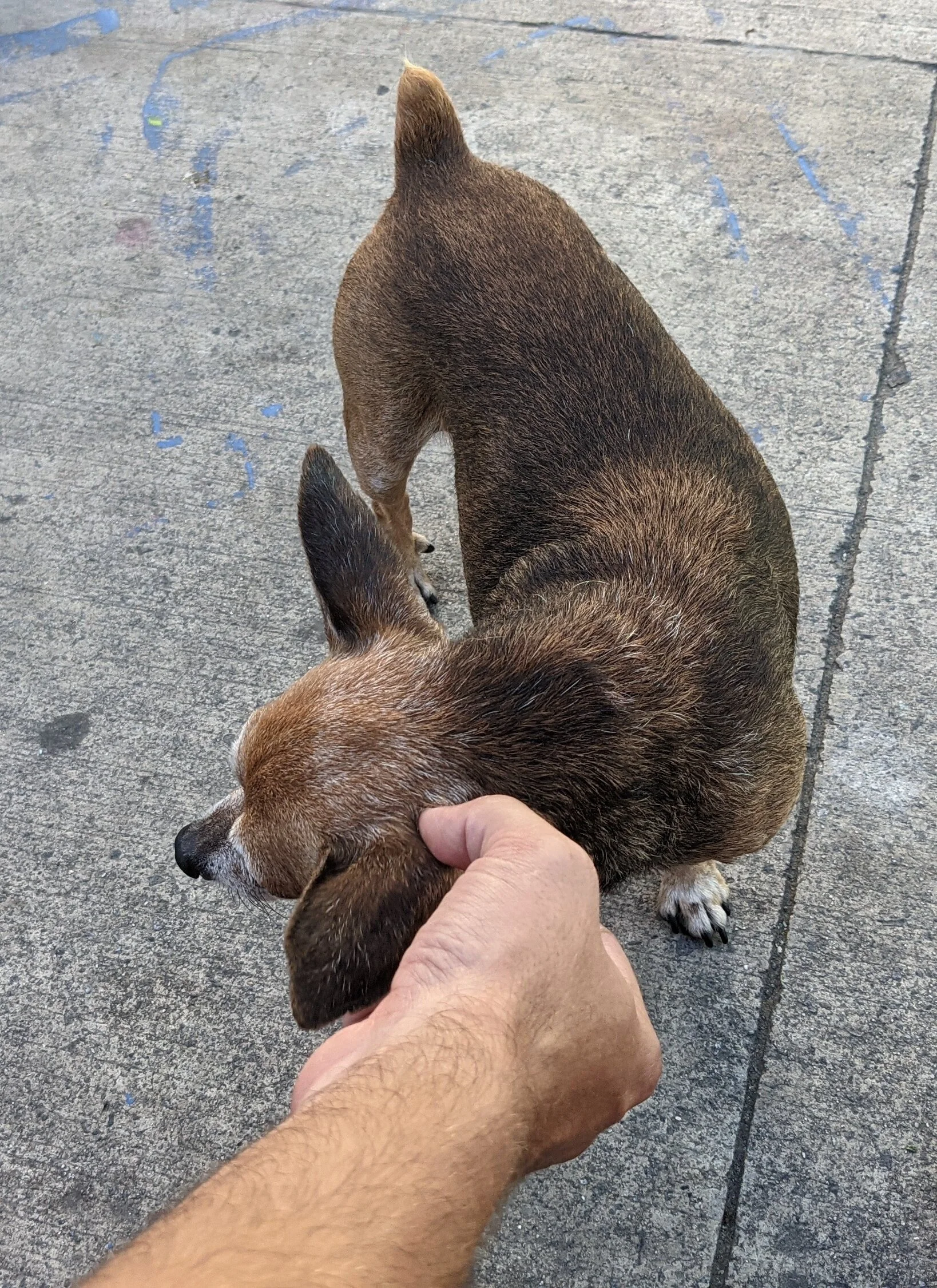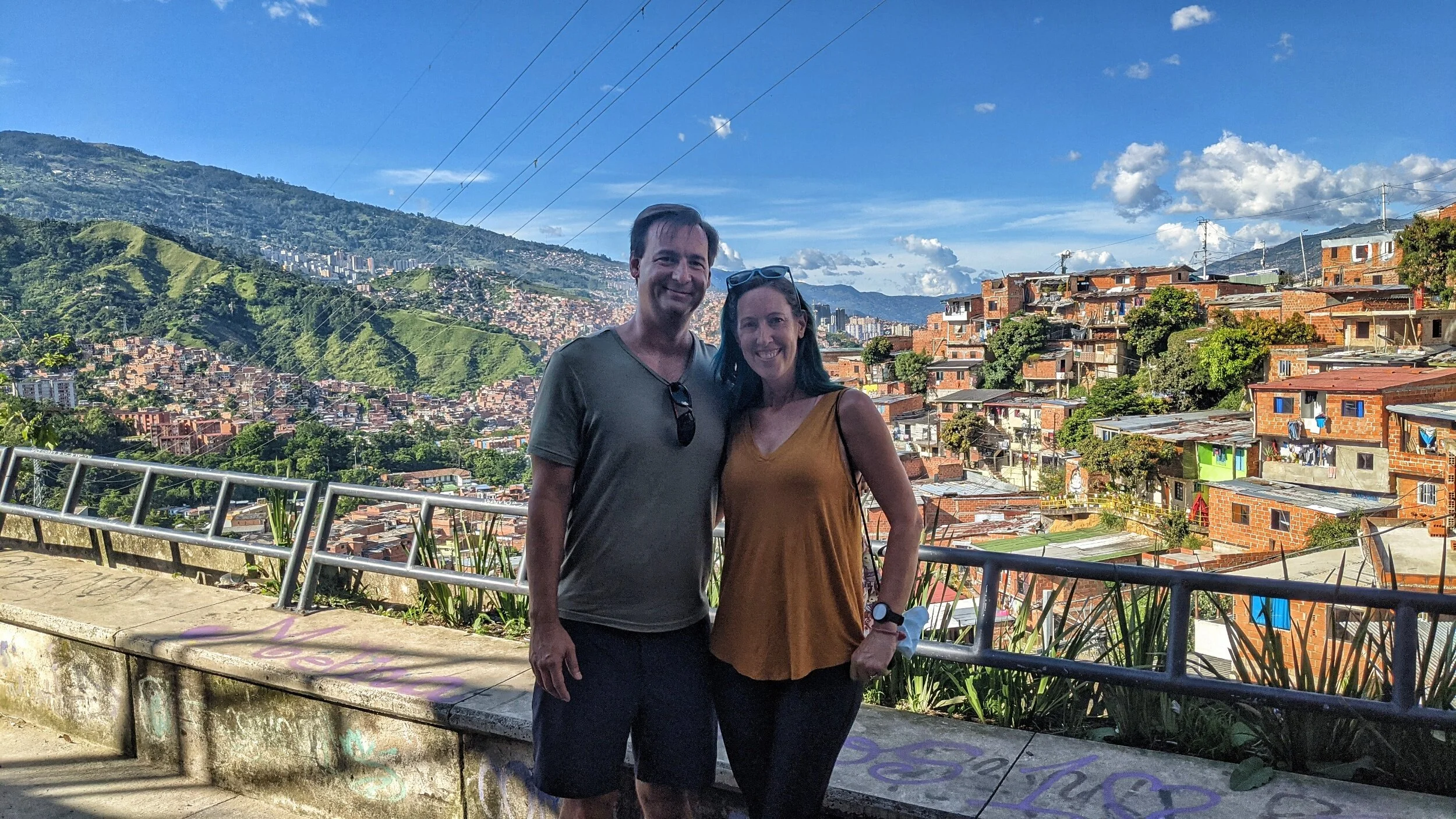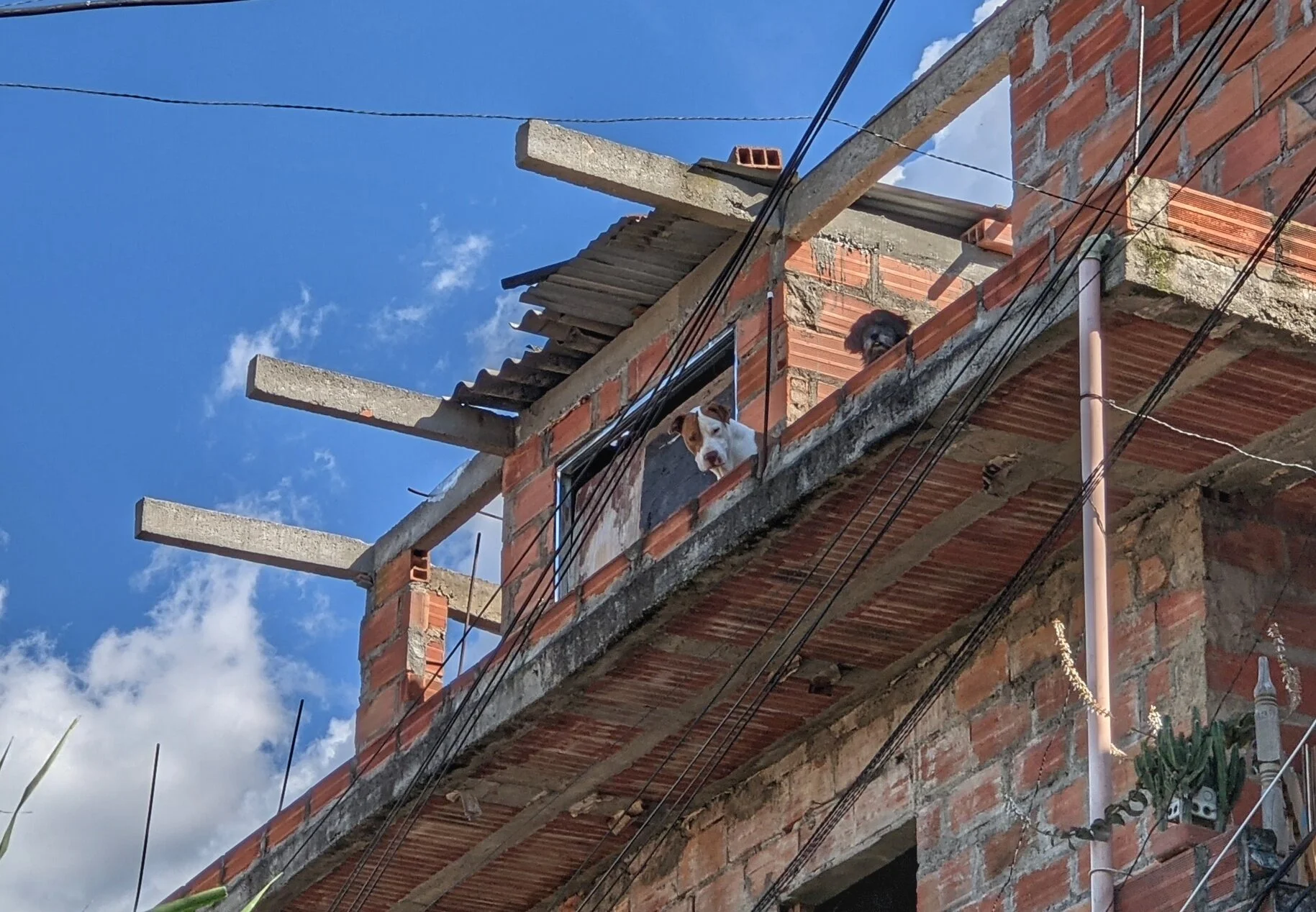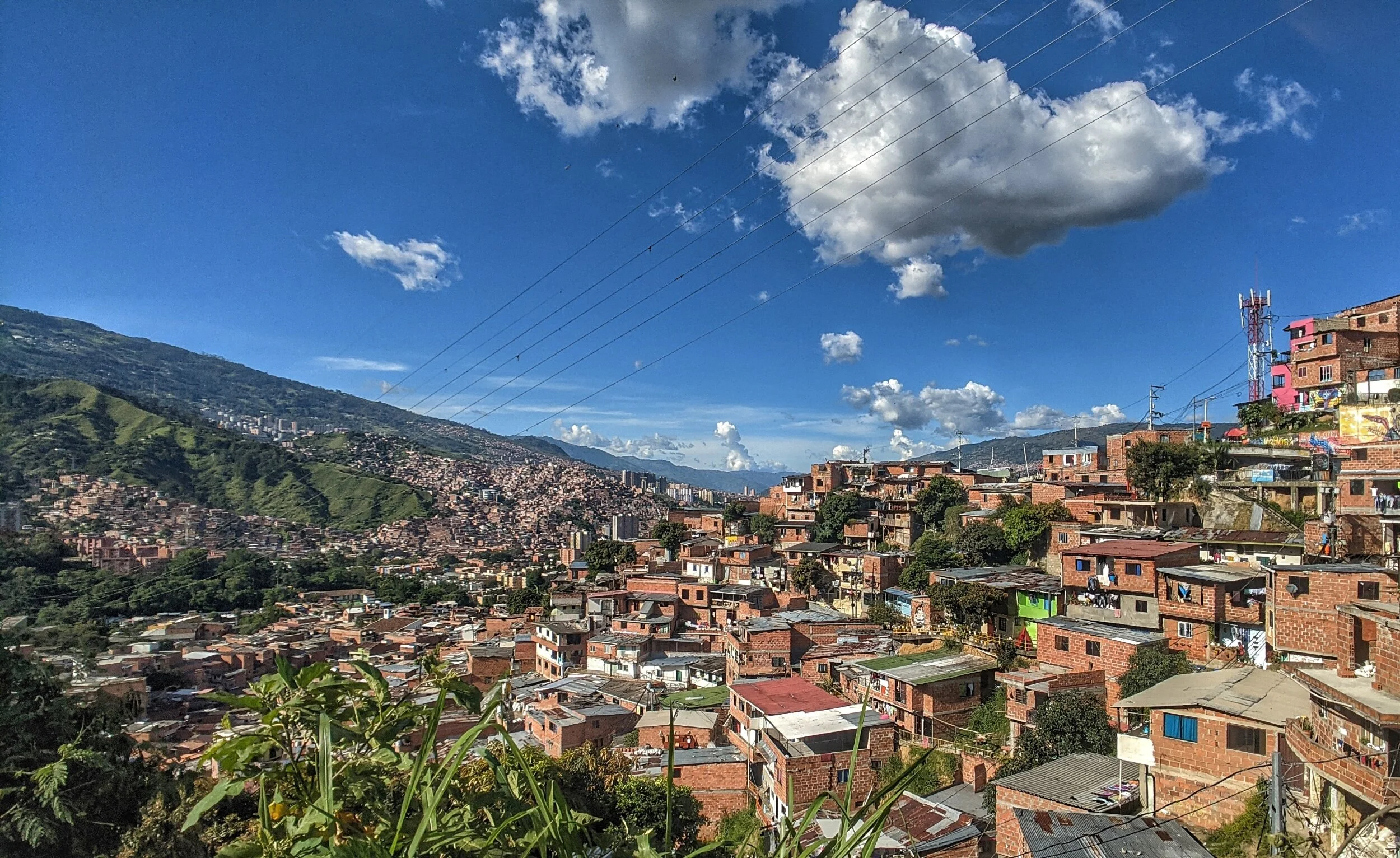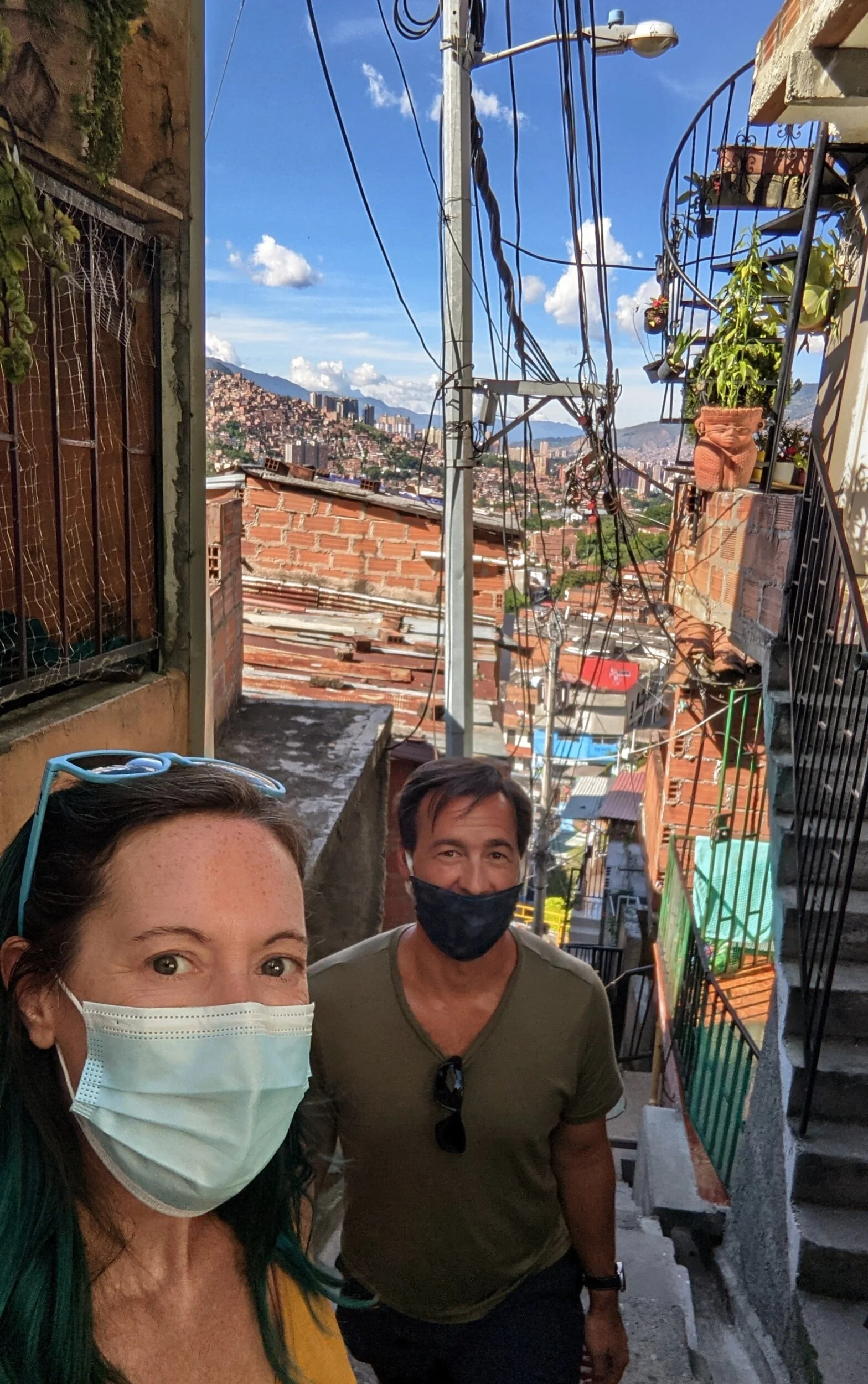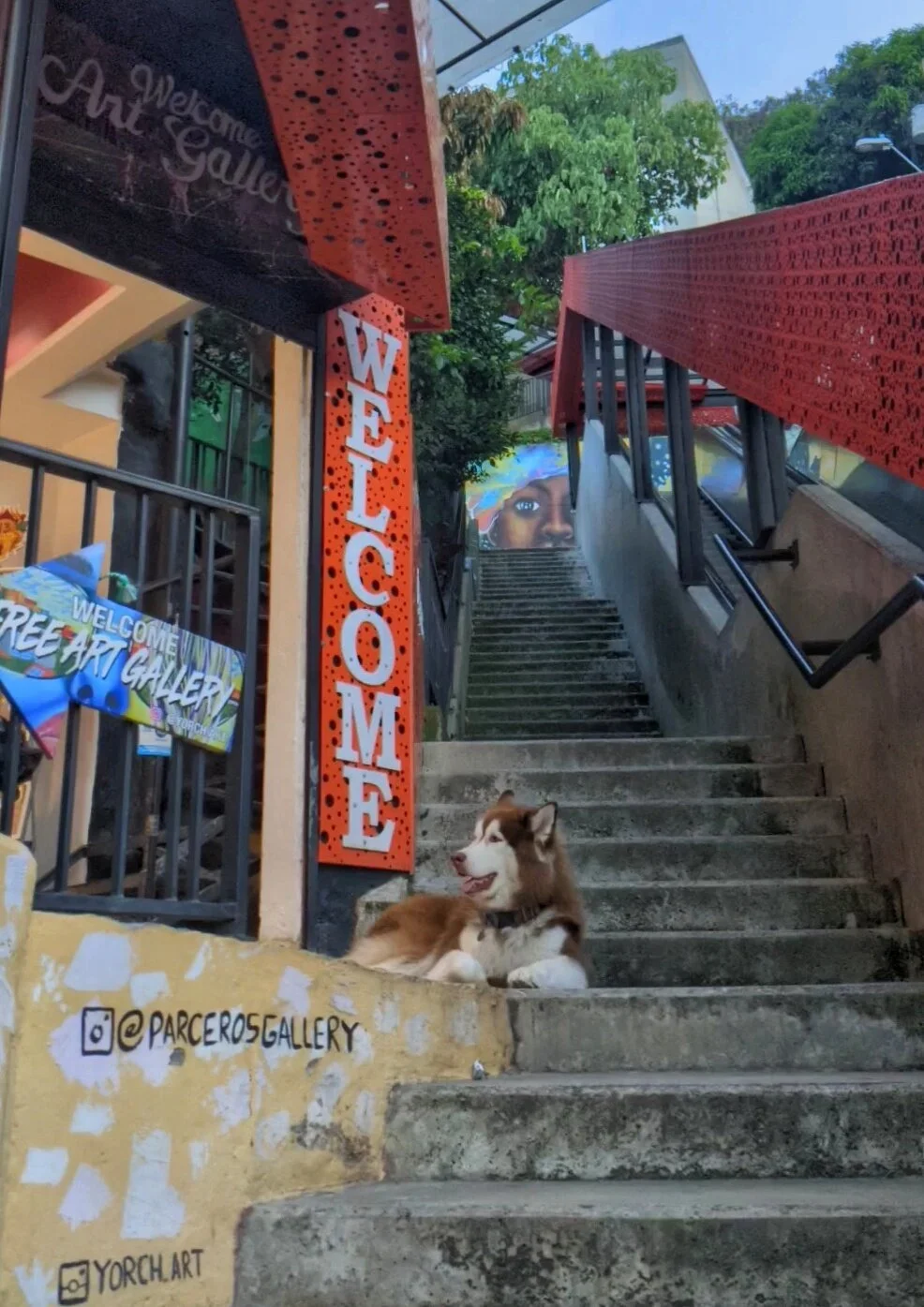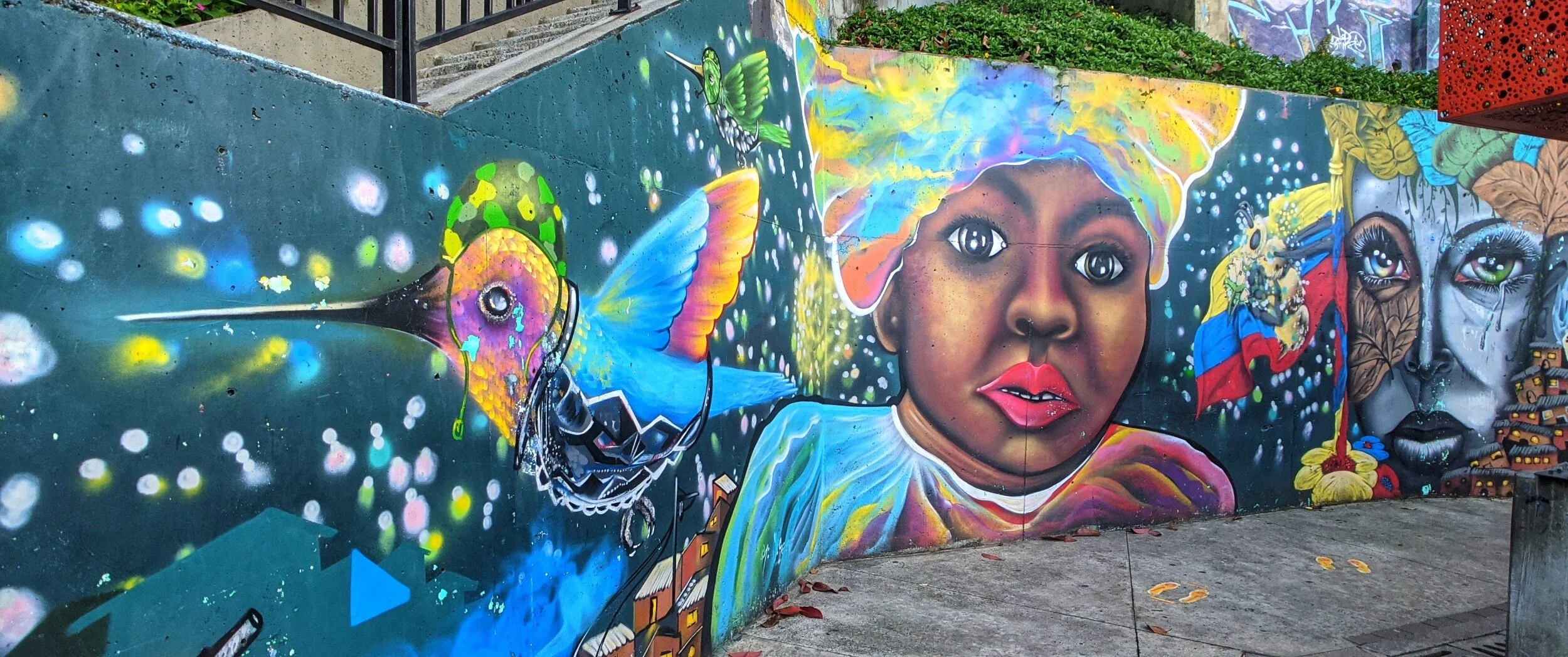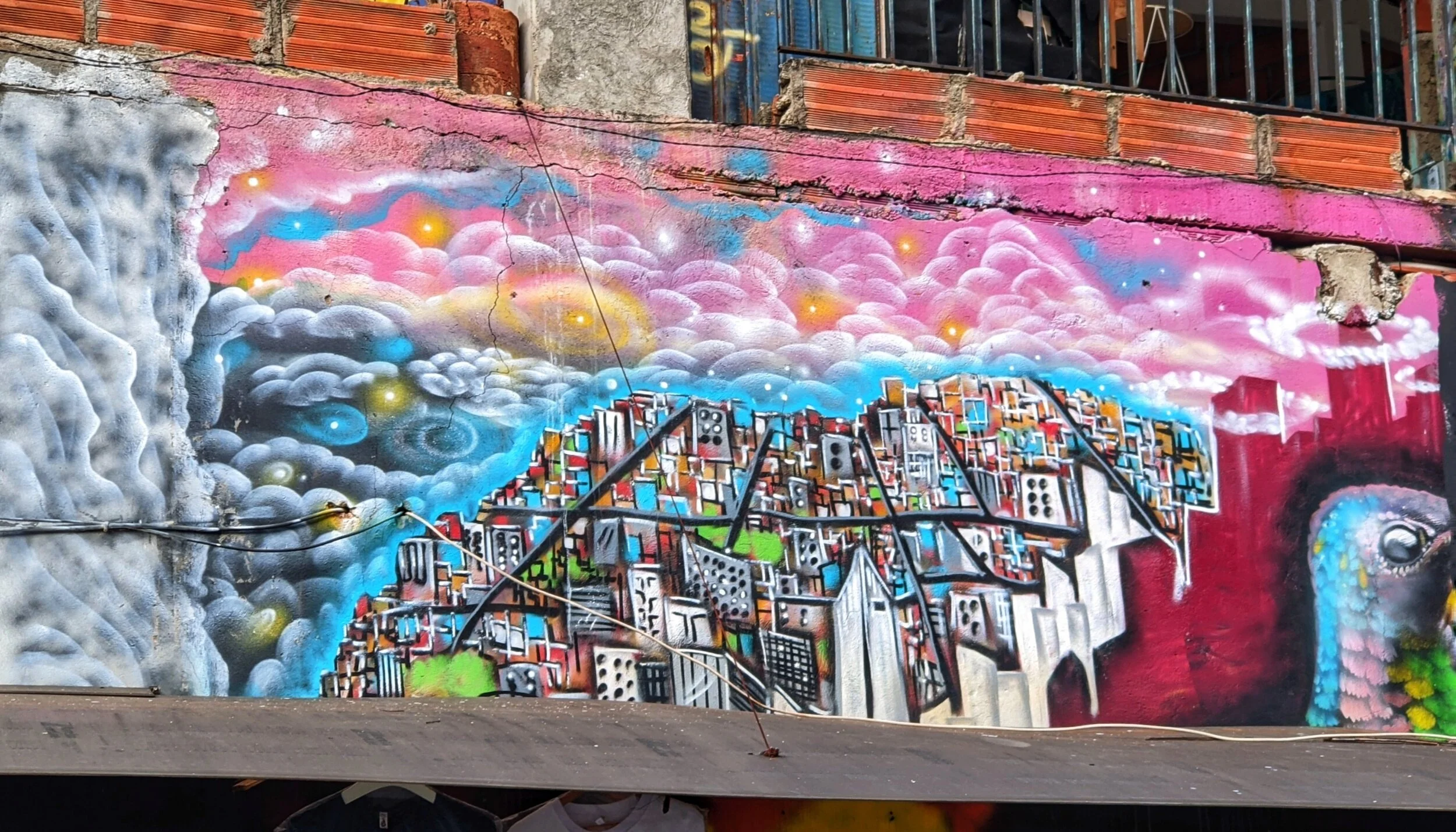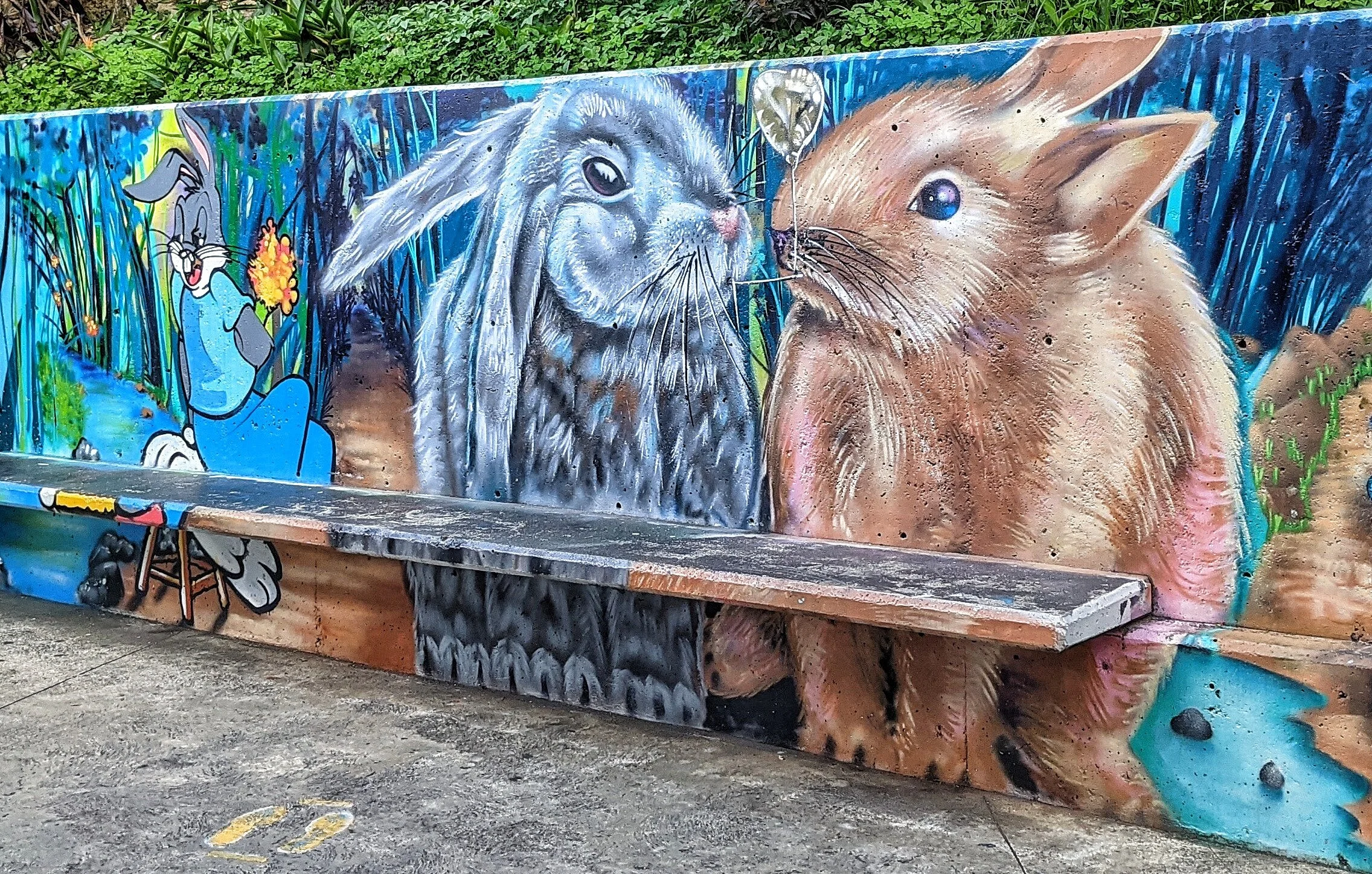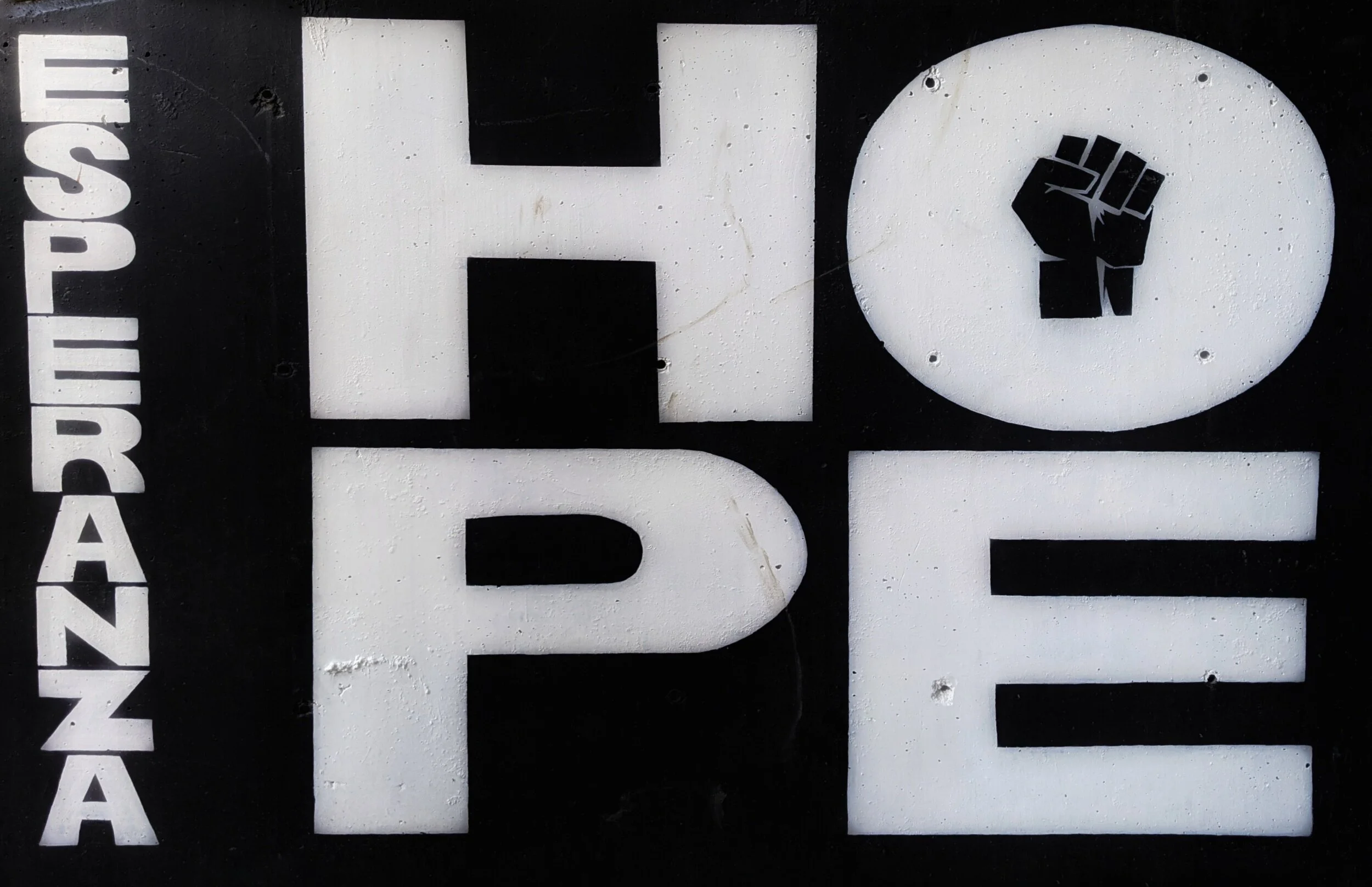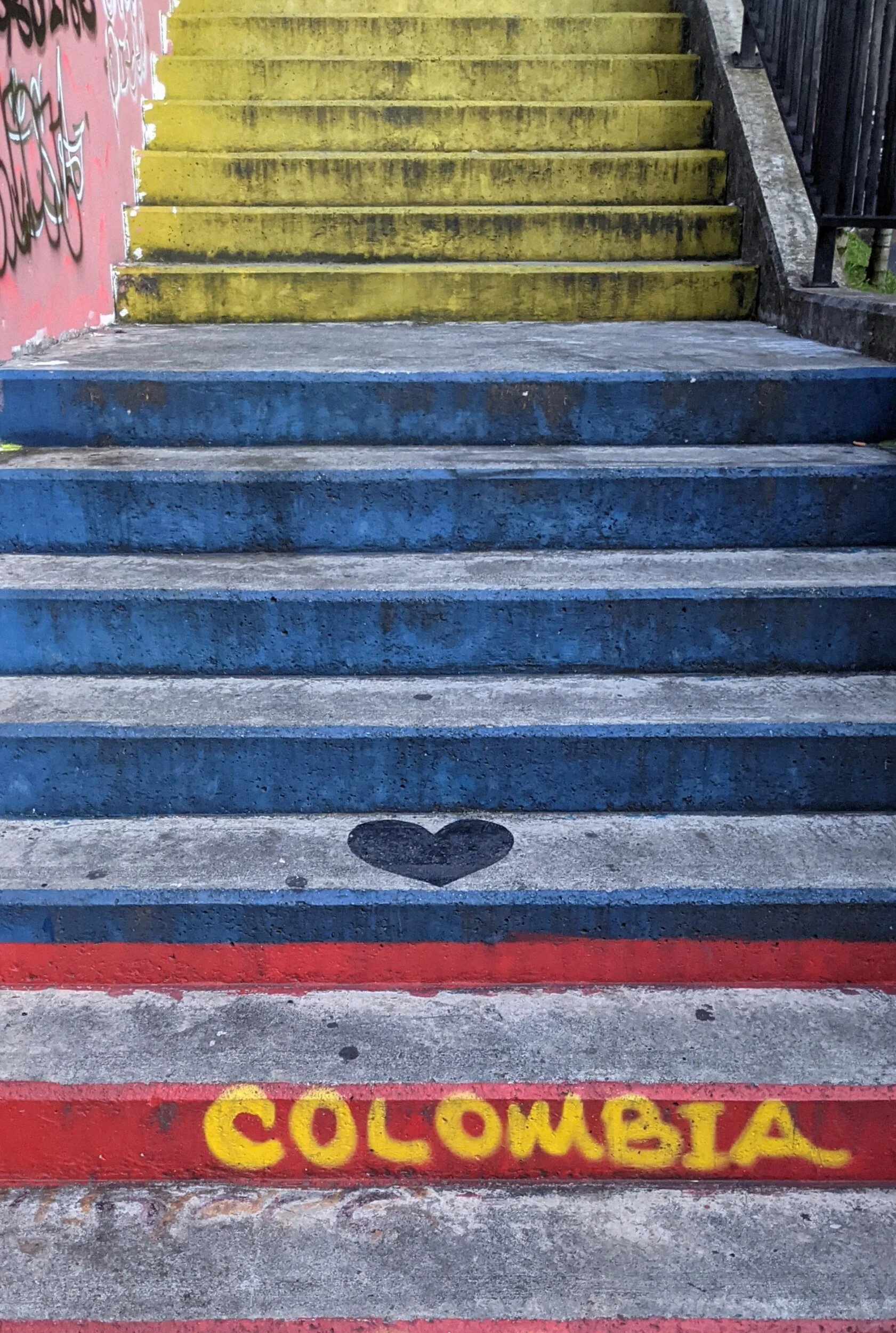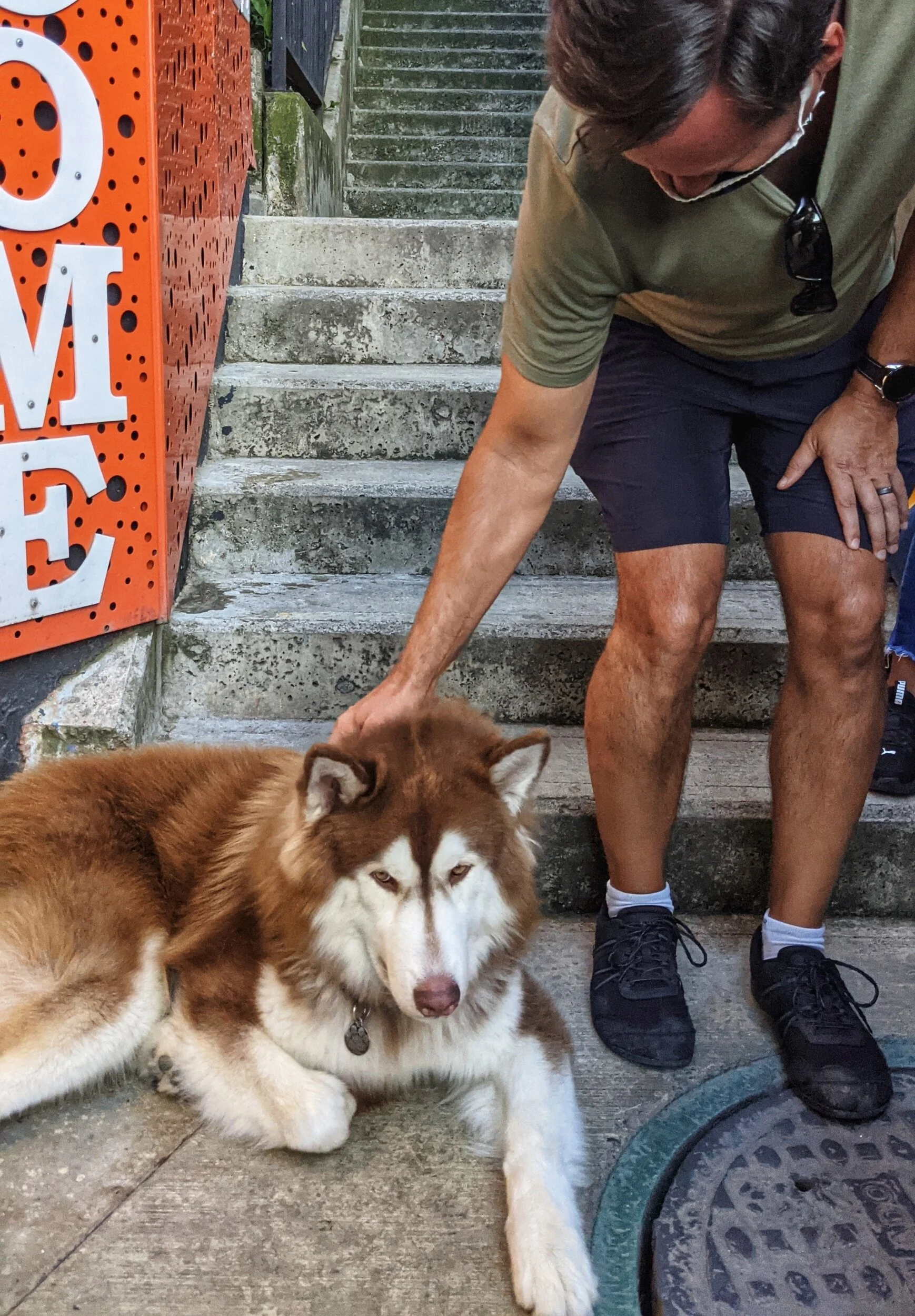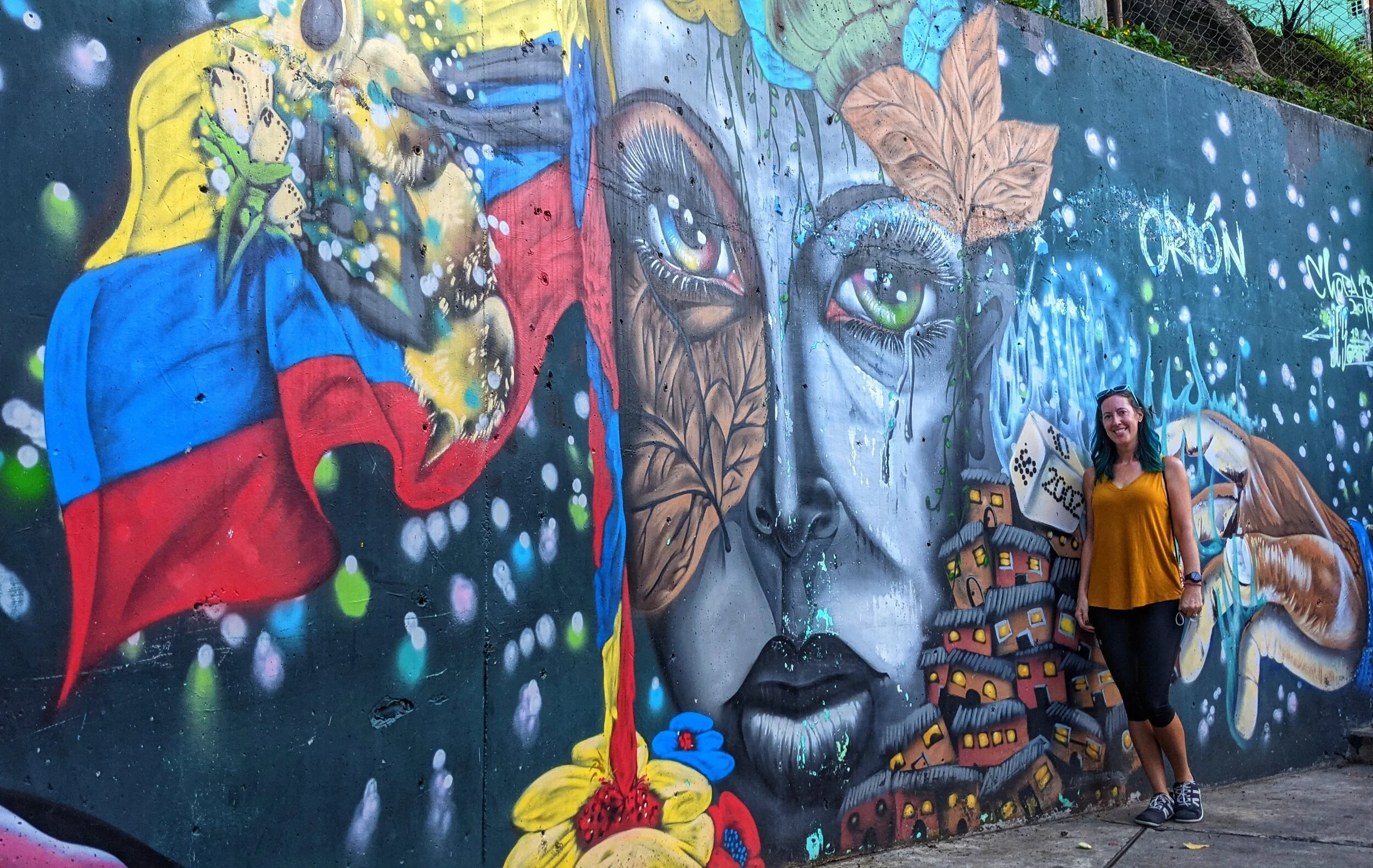Adventure Report: Medellin Experience
Have you ever met someone that was able to weave a story for hours on end that kept you enthralled? We just did! We met Julio on a (free) Real City Walking Tour here in Medellin. He guided us around the city center through one engaging story after another about the region’s colorful and sometimes violent history. Medellin is a beautiful big city in a valley with communities stretching up the surrounding hills. Really, really STEEP hills! This is key to the history of the area and the people. The flat valley areas were settled first with decent infrastructure like water, streets, and electricity. As the city grew with an influx of farmers from the countryside, the farmers started building their own houses up the steep hillsides.
At the end of the tour, Julio mentioned that he offers small tours of Comuna 13, where he grew up, through his independent tour company, Medellin Experience. I had debated putting a tour of Comuna 13 on our to-do list after reading about how it is becoming a touristy thing to do that felt a little like exploiting the locals living there. I knew if we decided to do a tour, I wanted it to be respectful of the citizens living there and that I wanted more than a tour of the famous graffiti and world-famous escalators. But Julio was so knowledgeable and because he had grown up in that neighborhood during the some of its worst years of the cartels and police corruption, it seemed like a perfect opportunity to learn more about life there. When another well-traveled gal on the Real City Walking Tour asked if we were interested in joining her to take the Comuna 13 tour with Julio the next day, I jumped at the chance.
By the 1980s and 90s, Comuna 13 was considered one of the most dangerous neighborhoods in the world. It was run by drug trafficking organizations who used the hillside barrio as a transit route in and out of the city. Beginning in the mid-2000s, the government started investing in transportation infrastructure such as cable cars and outdoor escalators to make the area better connected to the city center and improving the quality of life for the residents.
Our tour started at the metro station, where we took the cable car up the hillside to gain a bird’s eye perspective of the community and set the stage to see the transition of Julio’s barrio, veinte de julio, through his very real-life experience of it. We stopped at the home he grew up in (where his mother sold homemade cremas from the front door) and walked through the back alleys he ran through as a boy to visit his friends. He pointed out many of the steps built early on by the local community members with money raised from bingo games and lotteries, long before infrastructure improvements were attempted by the government. Just one small example of how the community came together and took care of problems on their own.
Julio’s stories made me feel connected to not only him but to the community that I’ve only read about and seen in TV shows. Hearing about Julio as a twelve-year-old witnessing the violence from gangs, guerillas, paramilitary, and the government: being woken by gunshots and a bombings, as remembered by a young teen, is an experience I won’t forget.
The four of us sat drinking juice for over an hour talking sociopolitical issues in both Colombia and the US. What started as a three-hour tour stretched on for more than five hours, including a frank conversations about the politicization and polarization of many issues. We didn’t solve the world’s problems, but it’s nice to know I’m not the only one feeling like the world has gone just a bit crazy.
I’d be remiss if I didn’t mention the graffiti we came across on our walking tour and share some pictures of the vibrant murals created by truly talented artists: a visual representation of the transformation this neighborhood has seen. The murals in Comuna 13 aren’t just for decoration, they also memorialize the past and express hope for the future. The longer you look at each one, the more the story unfolds.
